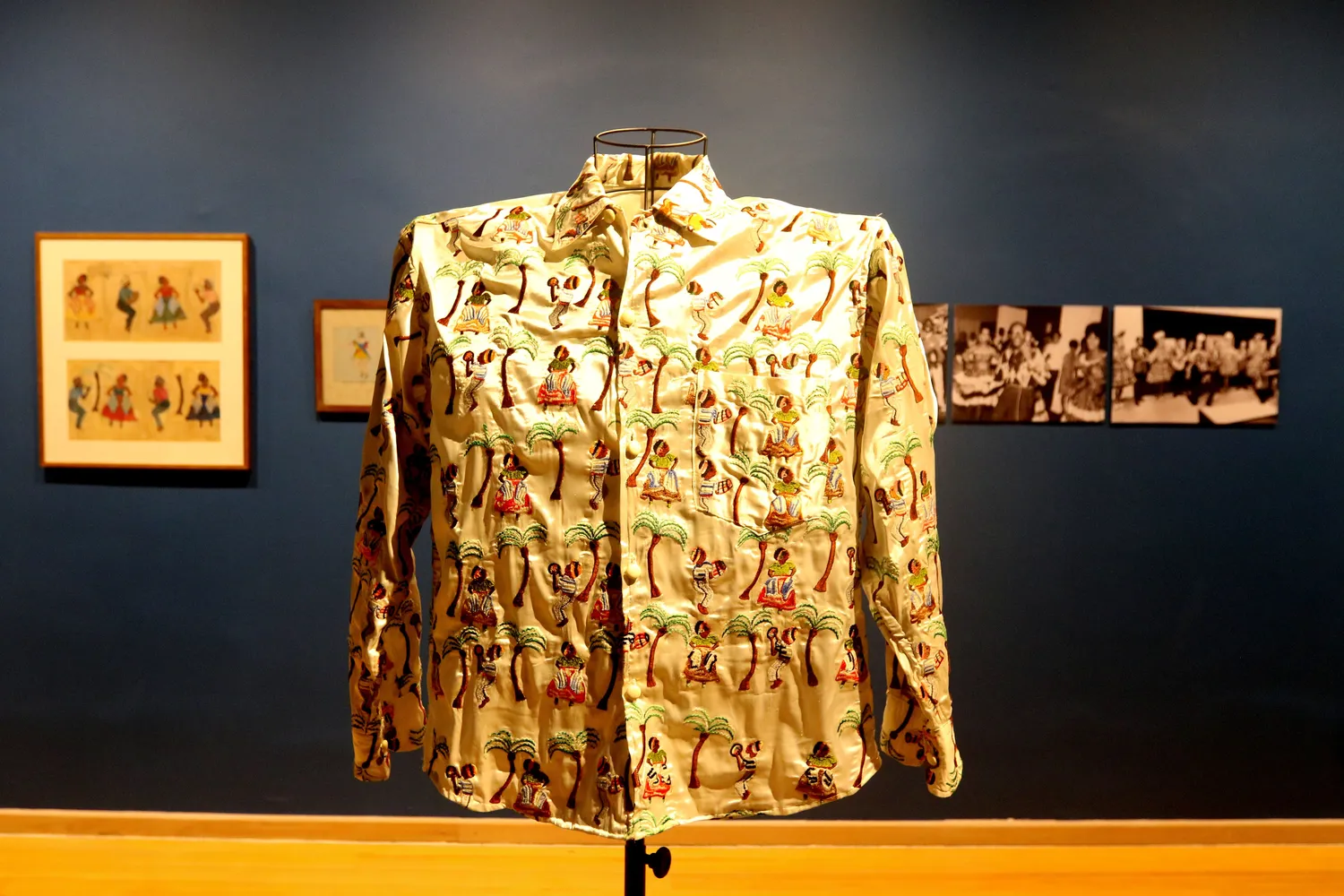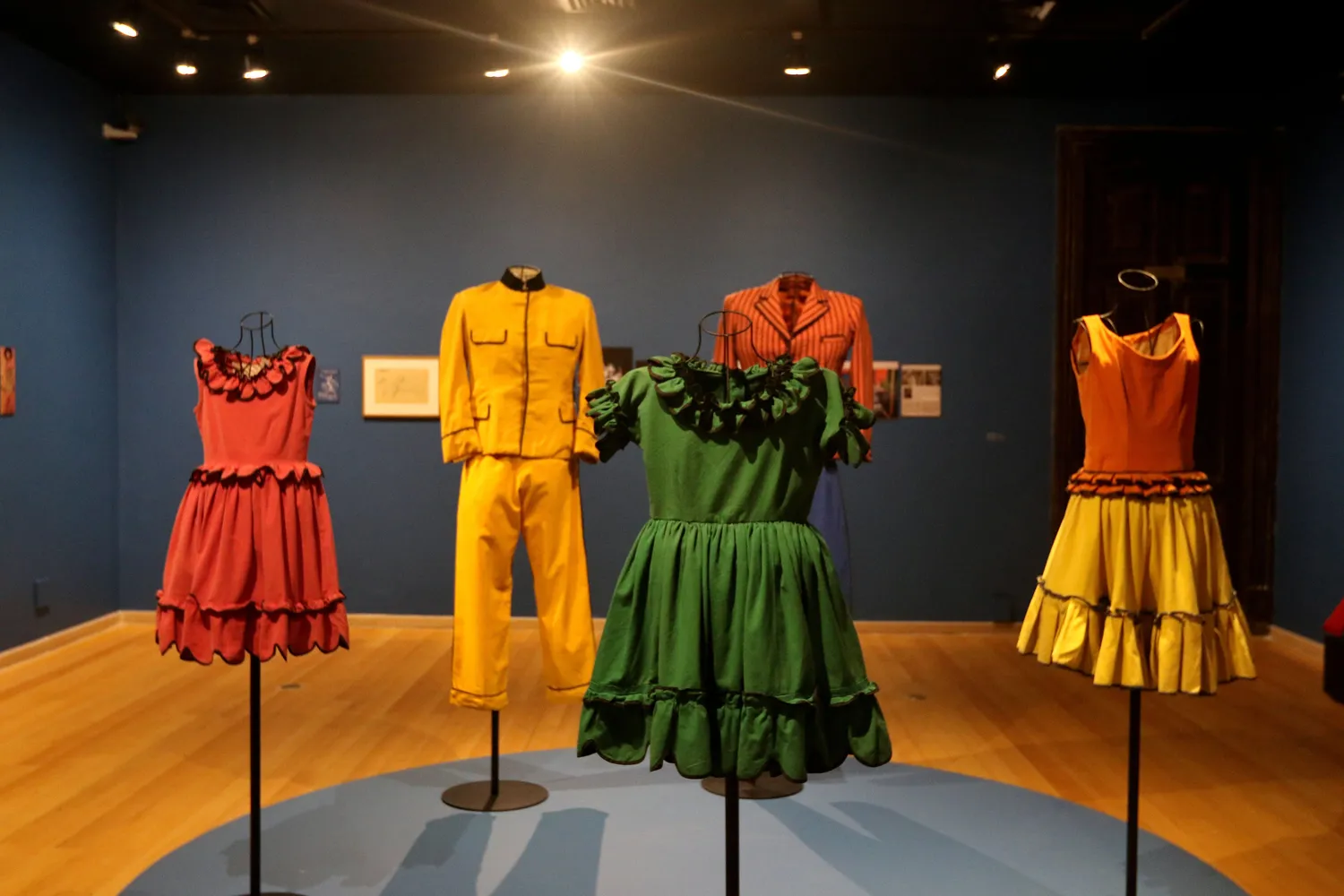
Heitor dos Prazeres
Art Basel 2024
June 13 - 16 Booth D6
For the Feature section of Art Basel 2024, Almeida & Dale presents a selection of works by Heitor dos Prazeres (1898 - 1966), including oil paintings on canvas, wood and cardboard, made mainly in the 1950s and 1960s. The group of works highlights the artist's unique and vibrant style, characterized by the expressiveness of the colors and the representation of themes related to Black Brazilian culture: scenes of urban and rural daily life, popular festivals and street games, portraying characters such as samba musicians and dancers, bohemians, candomblecistas and workers – themes with unavoidable political implications, since the multi-artist's production reflects on the post-slavery reality and the forms of resistance and preservation of Afro-Brazilian culture.
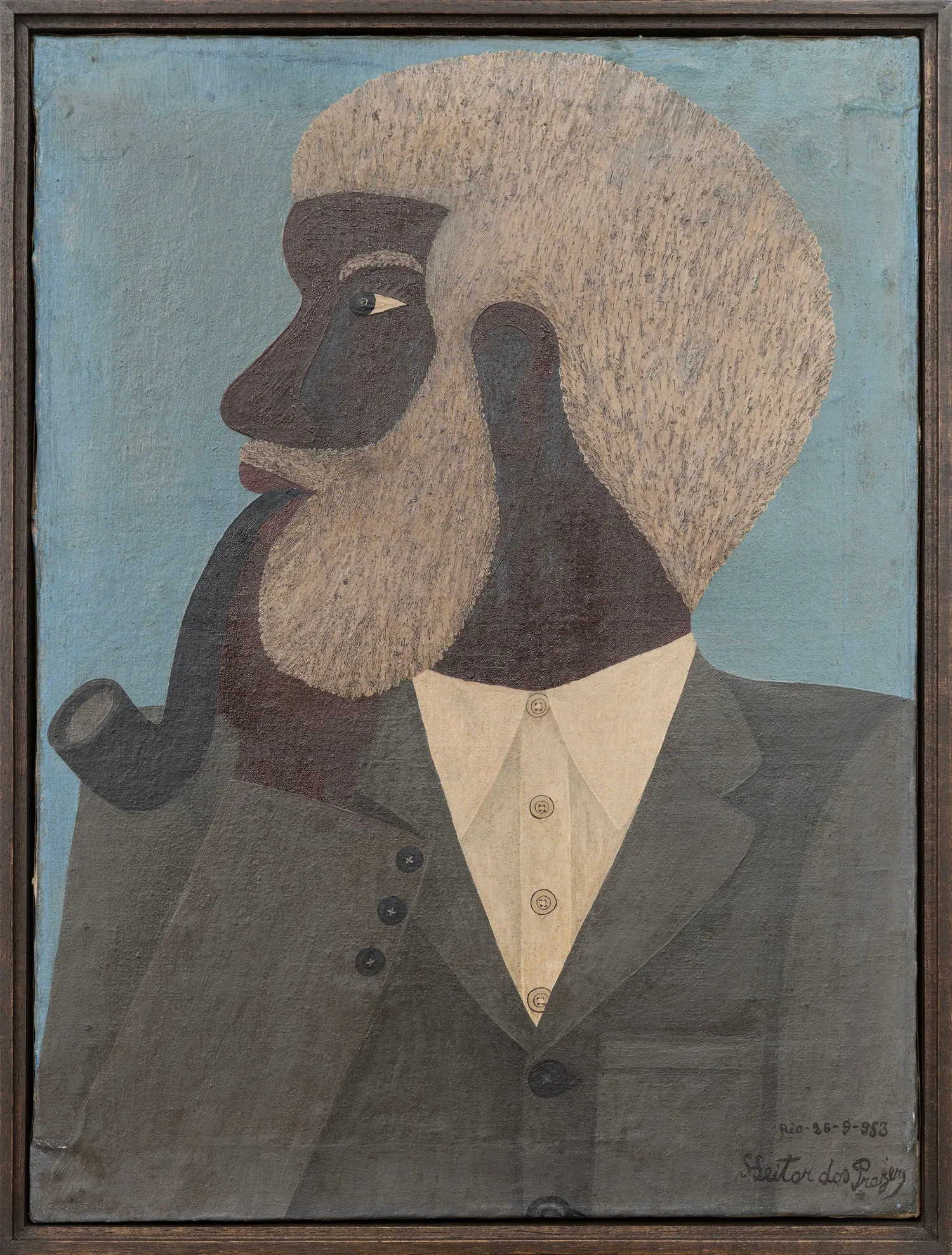
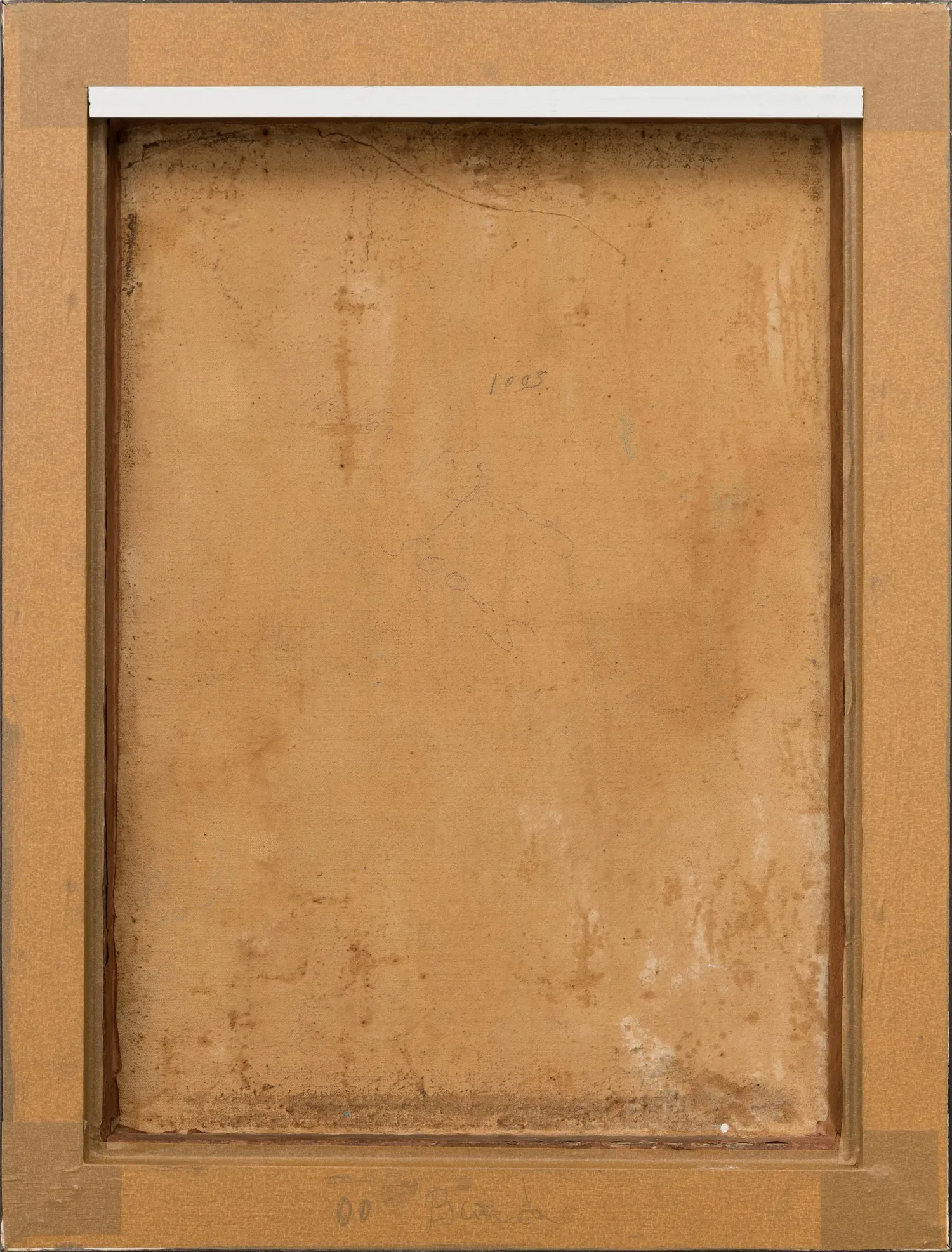
Heitor dos Prazeres
Untitled, 1953
Oil on canvas
47.5 x 35.0 cm
18 ¾ x 13 ¾ in
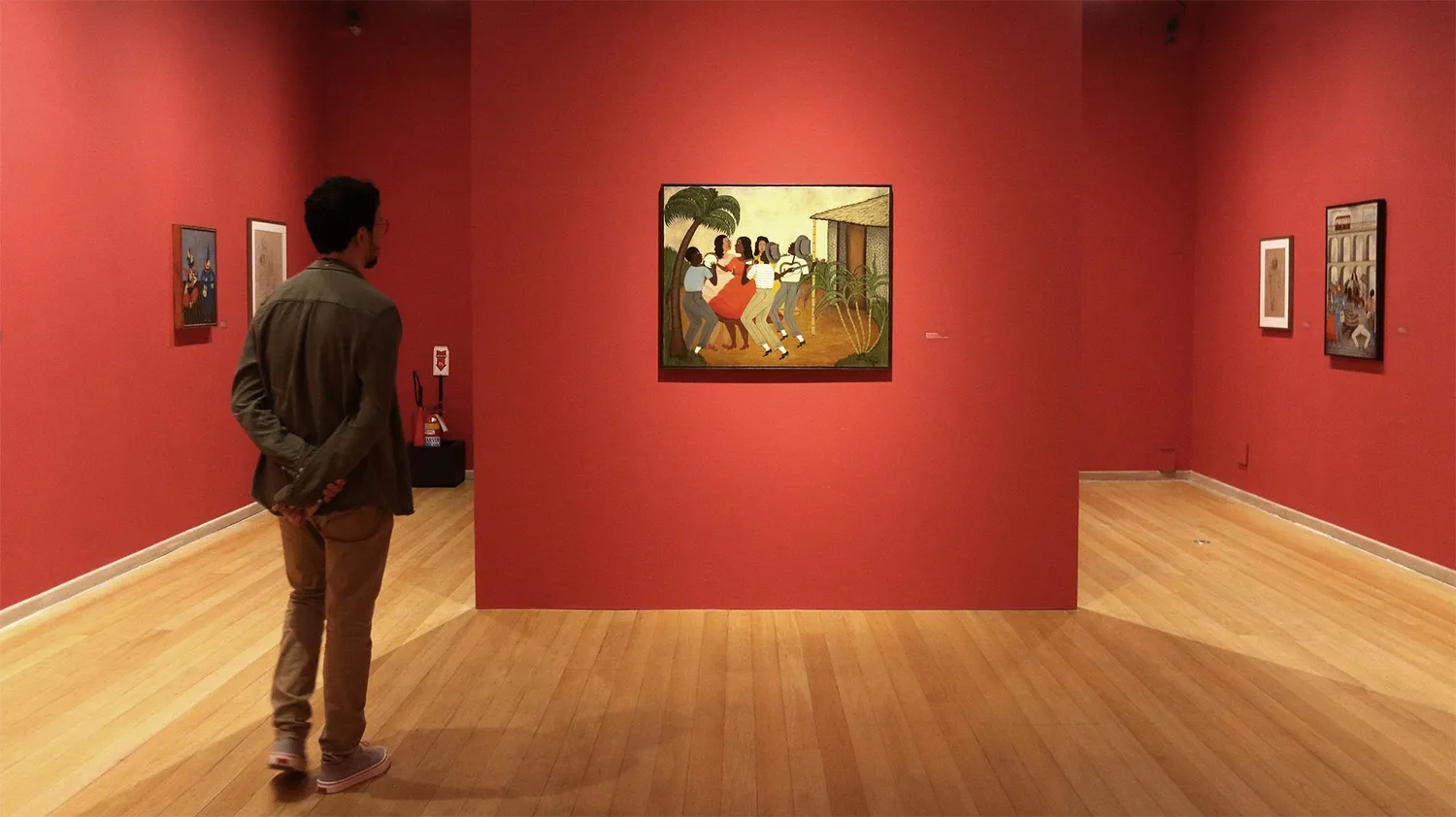
Exhibition view, Heitor dos Prazeres é meu nome, Centro Cultural Banco do Brasil – CCBB Rio de Janeiro (2023). Photo: Tânia Rego / Agência Brasil
Exhibitions and Collections
In the collection of MoMA in New York since the 1940s and one of the contributors to the 1er Festival Mondial des Arts Nègres [First World Festival of Black Arts], in Dakar, Senegal (1966), Prazeres gained recognition through a rich, varied and sophisticated artistic production. In 1951, the artist won third prize for painting at the Bienal de São Paulo with his work Moenda (1951), now in the collection of the Museu de Arte Contemporânea of the Universidade de São Paulo – MAC USP, and, the following year, he was part of the Brazilian representation at the 26th International Art Exhibition - La biennale di Venezia.

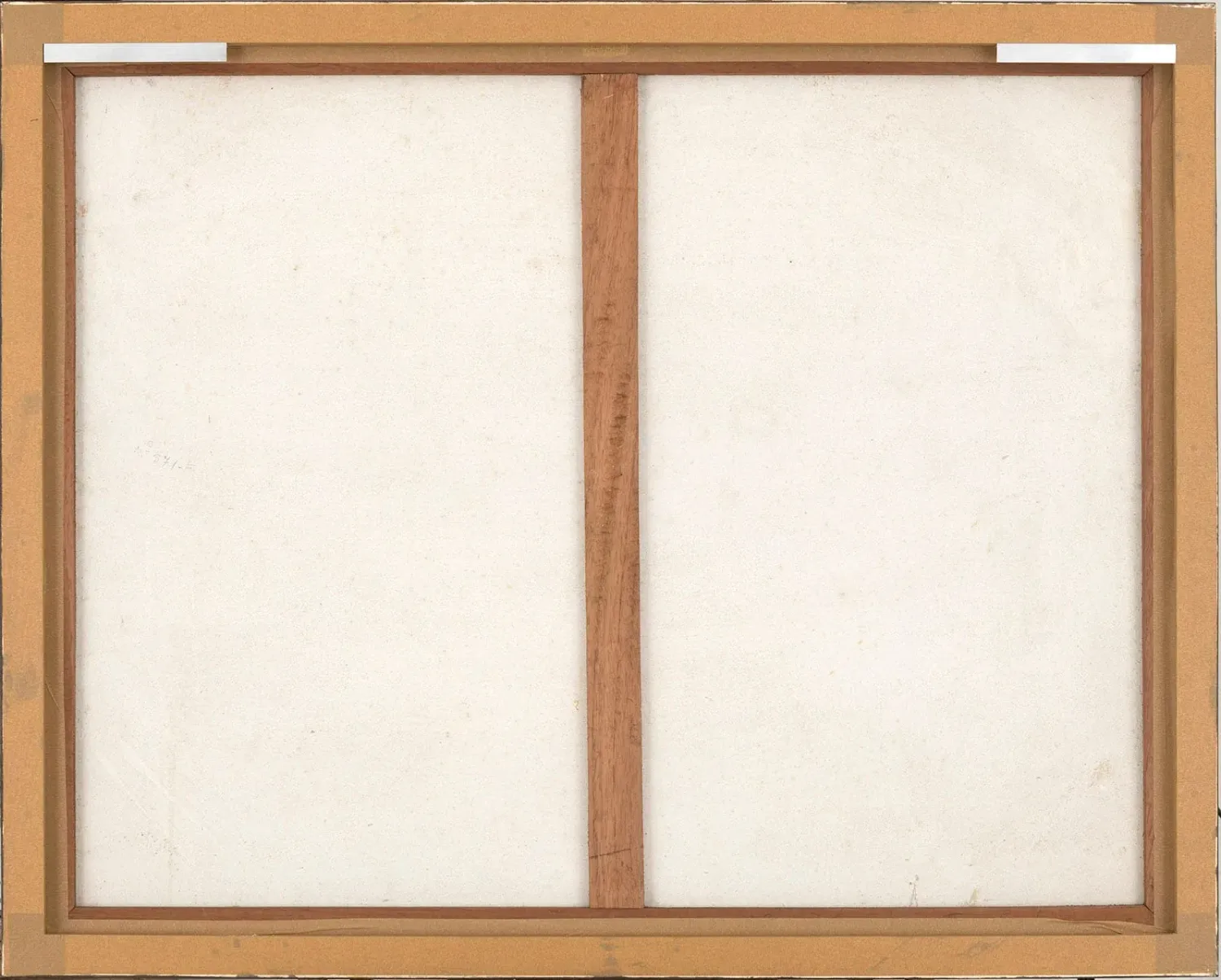
Heitor dos Prazeres
Untitled, 1965
Oil on canvas
79.5 x 99.5 cm
31 ¼ x 39 ⅛ in
He has held solo exhibitions at venues such as the Museu de Arte Moderna do Rio de Janeiro – MAM Rio, as well as group exhibitions in Brazil and in countries such as Argentina, Senegal, England, France and Germany. His career has been celebrated in various exhibitions, including a major retrospective in 2023 at the Centro Cultural Banco do Brasil – CCBB in Rio de Janeiro, curated by Haroldo Costa, Raquel Barreto, and Pablo León de la Barra.
In addition to being part of the MoMA collection, his work is included in institutional collections such as the Centre Georges Pompidou, Paris; El Museo del Barrio, New York; Museo Nacional Centro de Arte Reina Sofía, Madrid; Museu de Arte Moderna do Rio de Janeiro – MAM Rio; Museu Afro Brasil Emanuel Araujo, São Paulo; Museu de Arte do Rio - MAR, Rio de Janeiro; Museu de Arte de São Paulo Assis Chateaubriand – MASP, São Paulo; Museu de Arte Moderna de São Paulo – MAM SP, São Paulo; Pinacoteca de São Paulo, São Paulo, and Fundação Casa Roberto Marinho, Rio de Janeiro, among others.
“My ideal is to create. My music and my painting are born from the facts of ordinary life.”
Heitor dos Prazeres, in Heitor dos Prazeres: sua arte e seu tempo, 2003

Little Africa
The origins of samba and the cultural formation of Heitor dos Prazeres
Heitor dos Prazeres was born in Rio de Janeiro in 1898 to a family from Bahia, in the Northeastern Brazil. Like many post-abolition migrants, his parents moved to Rio de Janeiro – the country's capital until 1961 – in search of work and better living situation.
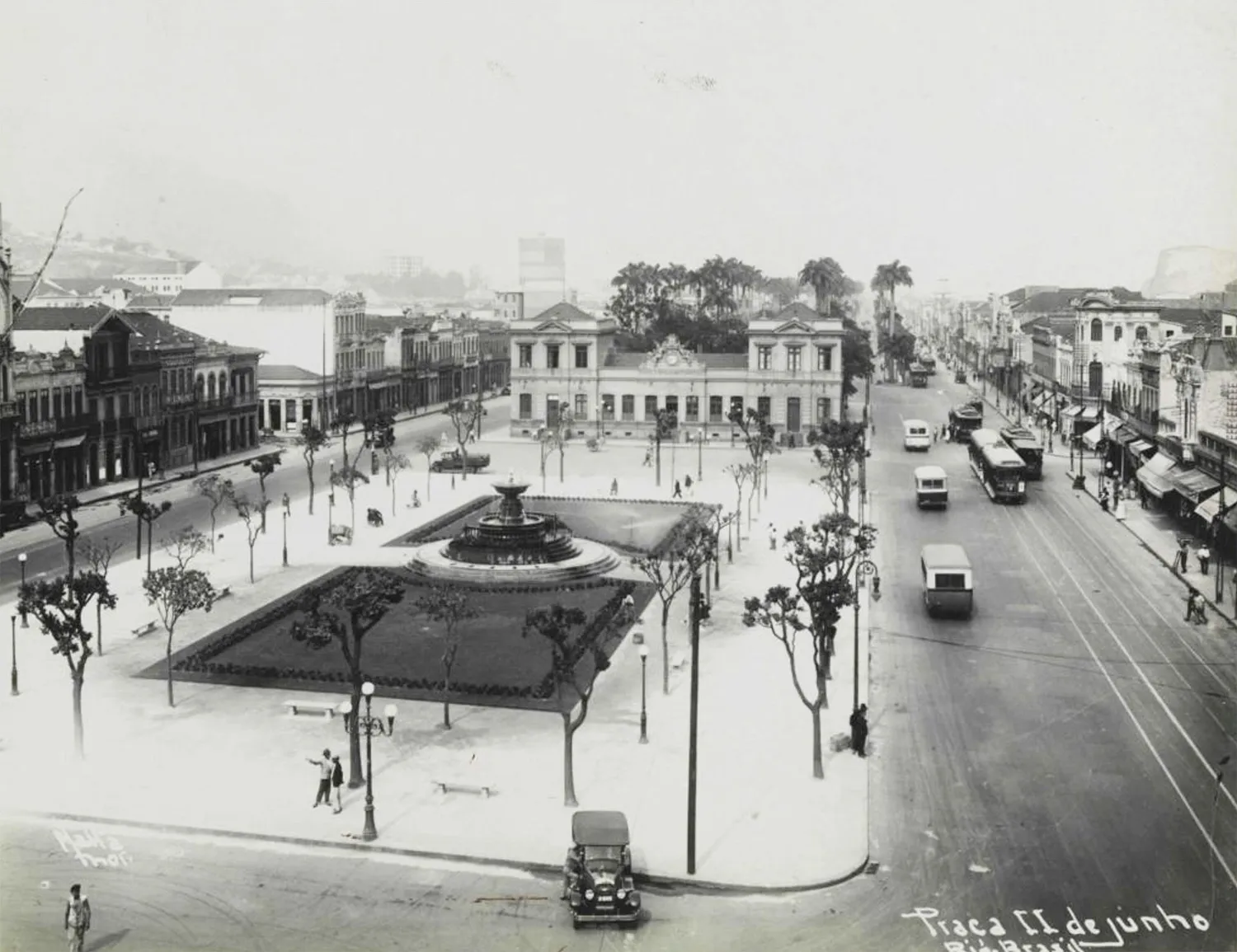
Praça Onze, Rio de Janeiro (c.1922). Photo: Augusto Malta / Acervo FBN
Heitor's family was poor, but had a very rich cultural, social and religious life. They lived in the surroundings of Praça Onze, close to the port area, where most of the city's Black population lived. With modernization, entire regions of Rio de Janeiro were brought down and rebuilt, pushing the underprivileged to the hills, which turned into favelas. However, Heitor's family never left the neighborhood, where Afro-Brazilian culture was experienced in all its complexity.
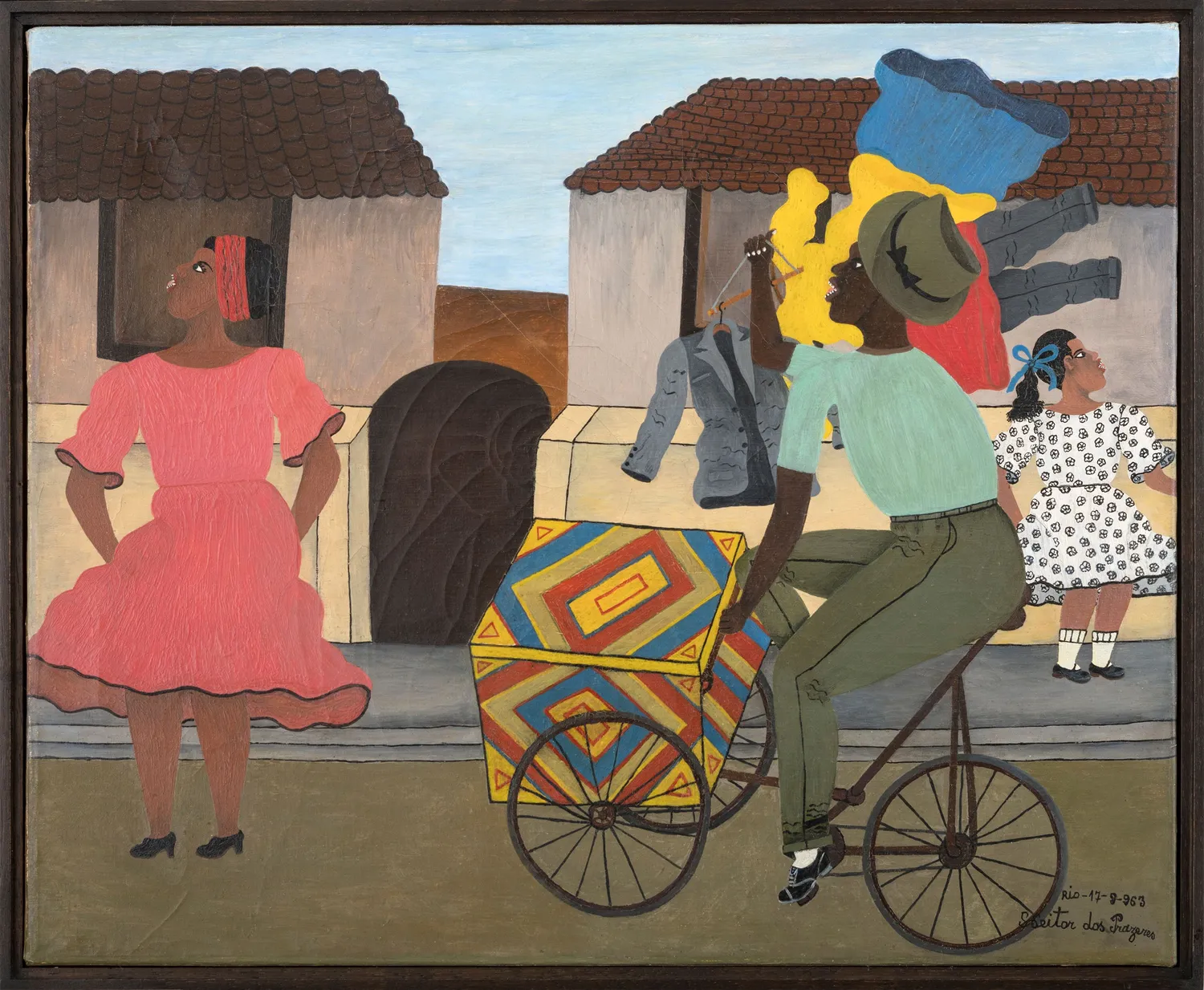

Heitor dos Prazeres
Untitled, 1963
Oil on canvas
45.5 x 55.0 cm
17 ¾ x 21 ⅝ in
The Umbanda and Candomblé rituals agitated the so-called Little Africa, as the region is still known today (some say it was Heitor who coined this poetic and unequivocal name). Eduardo, Heitor's father, worked as a carpenter and played the clarinet in the National Guard band. Celestina, his mother, was a seamstress and made. With his parents, Heitor developed skills that would be integrated into his repertoire of artistic practices.

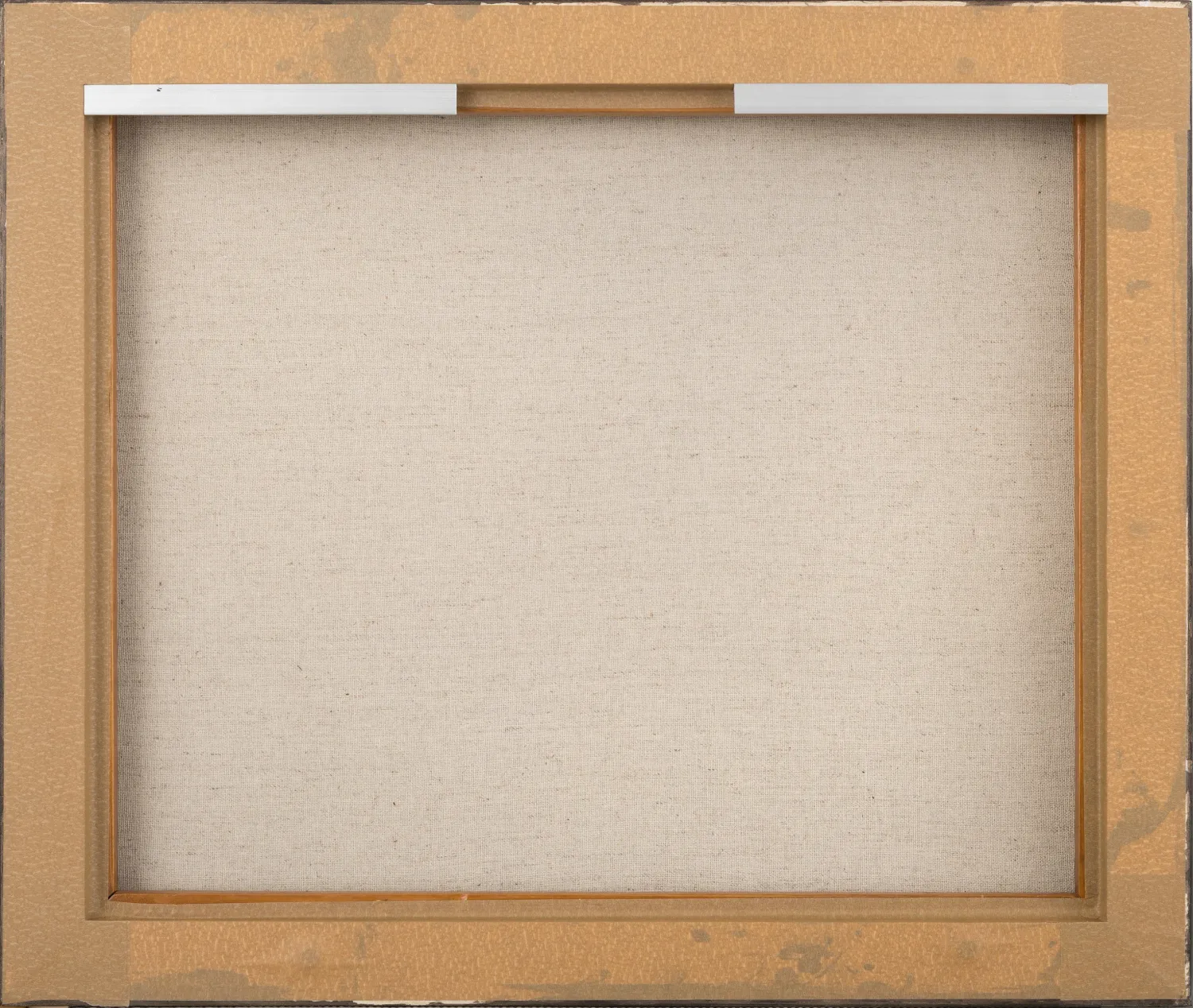
Heitor dos Prazeres
Lavadeira, c. 1960
Oil on canvas
38 x 46 cm
15 x 18 ⅛ in


Heitor dos Prazeres
Untitled, 1962
Gouache on cardboard
37 x 50 cm
14 ⅝ x 19 ¾ in
The Prazeres household was a bustling one: music and dancing were part of Heitor’s everyday life, who inherited a taste for family gatherings and celebrations. When Heitor was seven his father died. As was common at the time, little Lino, as he was nicknamed, started working to help support the family; he was always on the streets. He worked as a tailor, shoeshiner and selling newspapers around town. This experience as a newspaper boy gave rise to one of the Carnival songs he later wrote and composed.
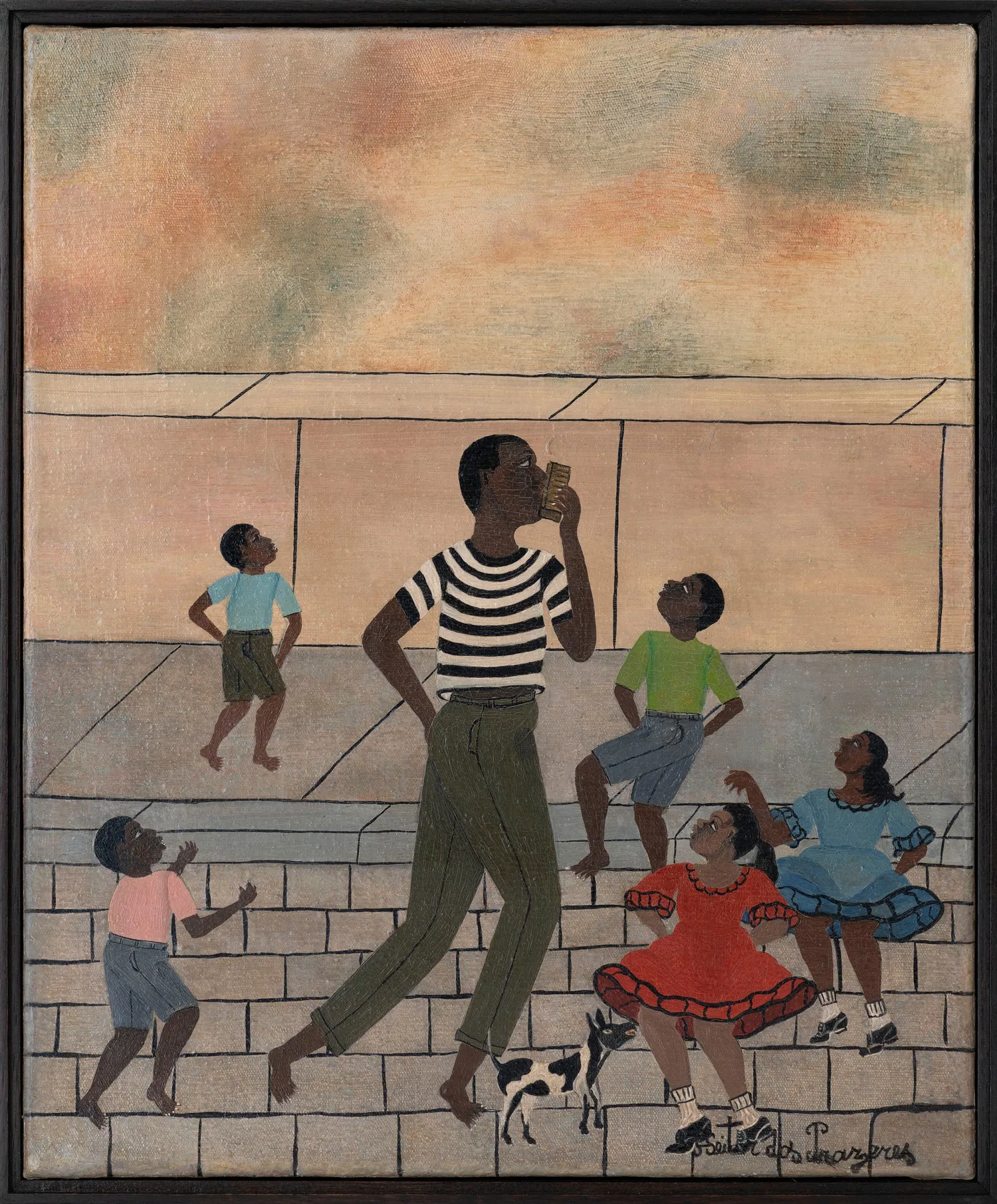

Heitor dos Prazeres
Gaitista, 1960's
Oil on canvas
46.0 x 38.3 cm
18 ⅛ x 15 in
“You have to create strategies to prevail, to continue, to survive, to resist. So, the manifestations that come from the Black population, such as Carnival, can be a way of engaging, of expressing oneself publicly. This way of existing has always come from this survival strategy.”
Glaucea Helena, MASP Pannels: Heitor dos Prazeres: protagonismo e arte, 2018

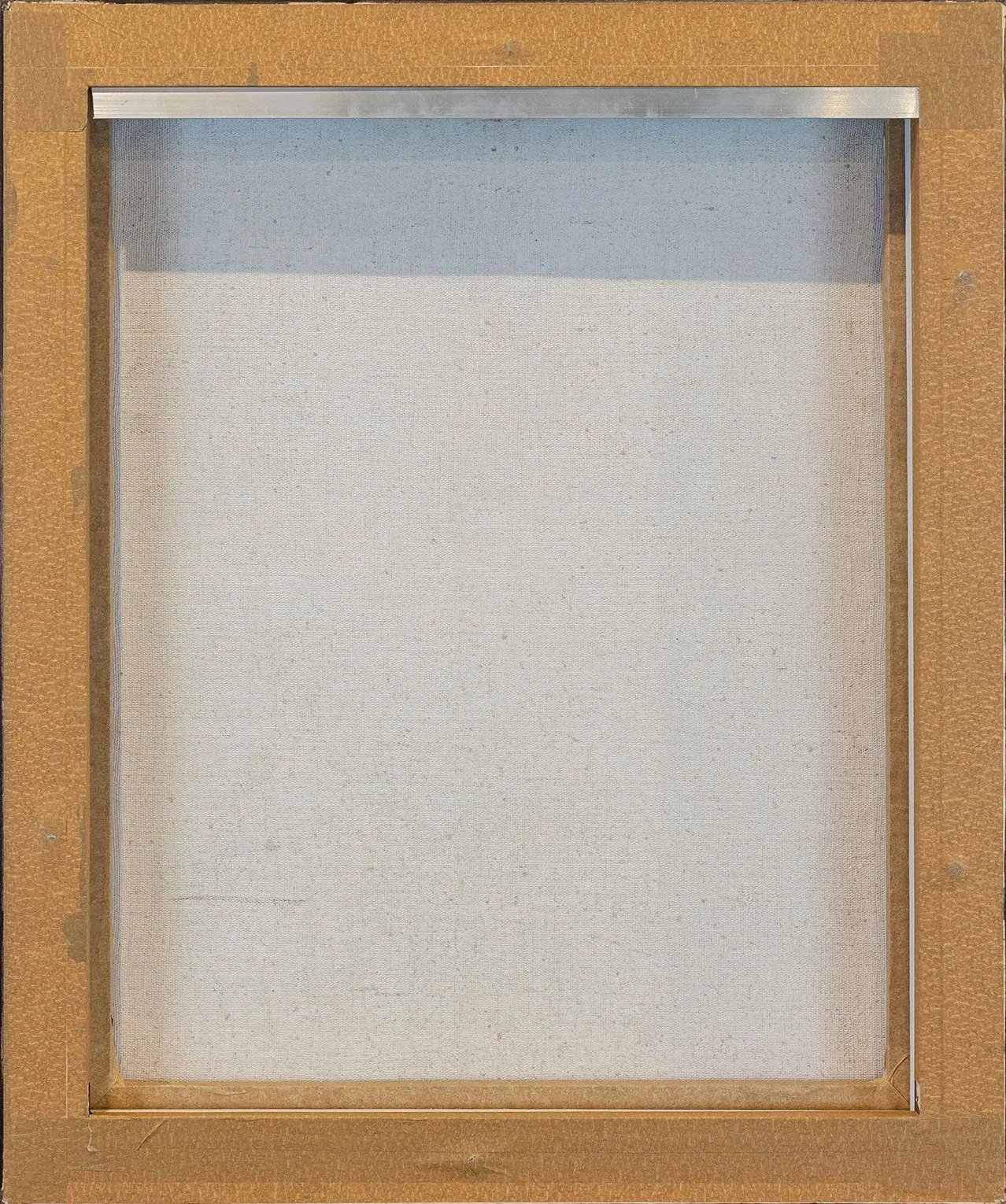
Heitor dos Prazeres
Untitled, 1960's
Oil on canvas
46.0 x 37.5 cm
18 ⅛ x 14 ¾ in
One of the biggest influences on the young Heitor's life was his uncle Hilário Jovino, who was a musician and an employee of the Navy Arsenal. He would take Heitor as a child to the homes of the Tias Baianas (“matriarch figures”), the most famous being Tia Ciata, where the foundations of Rio de Janeiro's urban samba were formed.
The most prominent leaders of Little Africa were also Mães and Pais de Santo, like Hilário himself. In these places there was music and Candomblé rituals, attended by the Little Africa community, as well as renowned personalities from Rio's culture. In 1883, Hilário founded Rancho Reis do Ouro, one of the places where the Dia de Reis (Twelfth Night) was celebrated. On his initiative, the festivities began to take place on the Carnival holiday, the embryonic procession of Rio's samba schools.
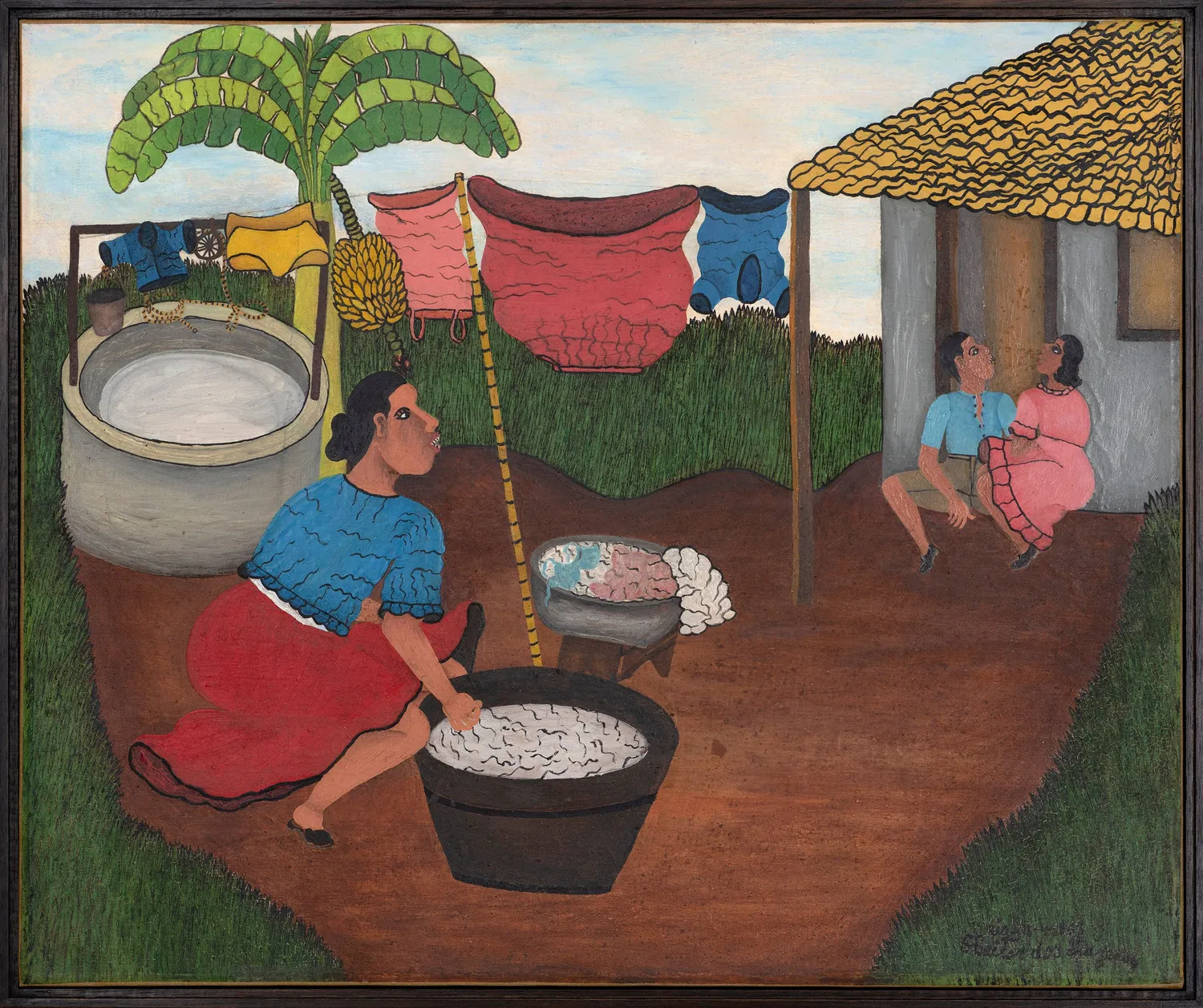
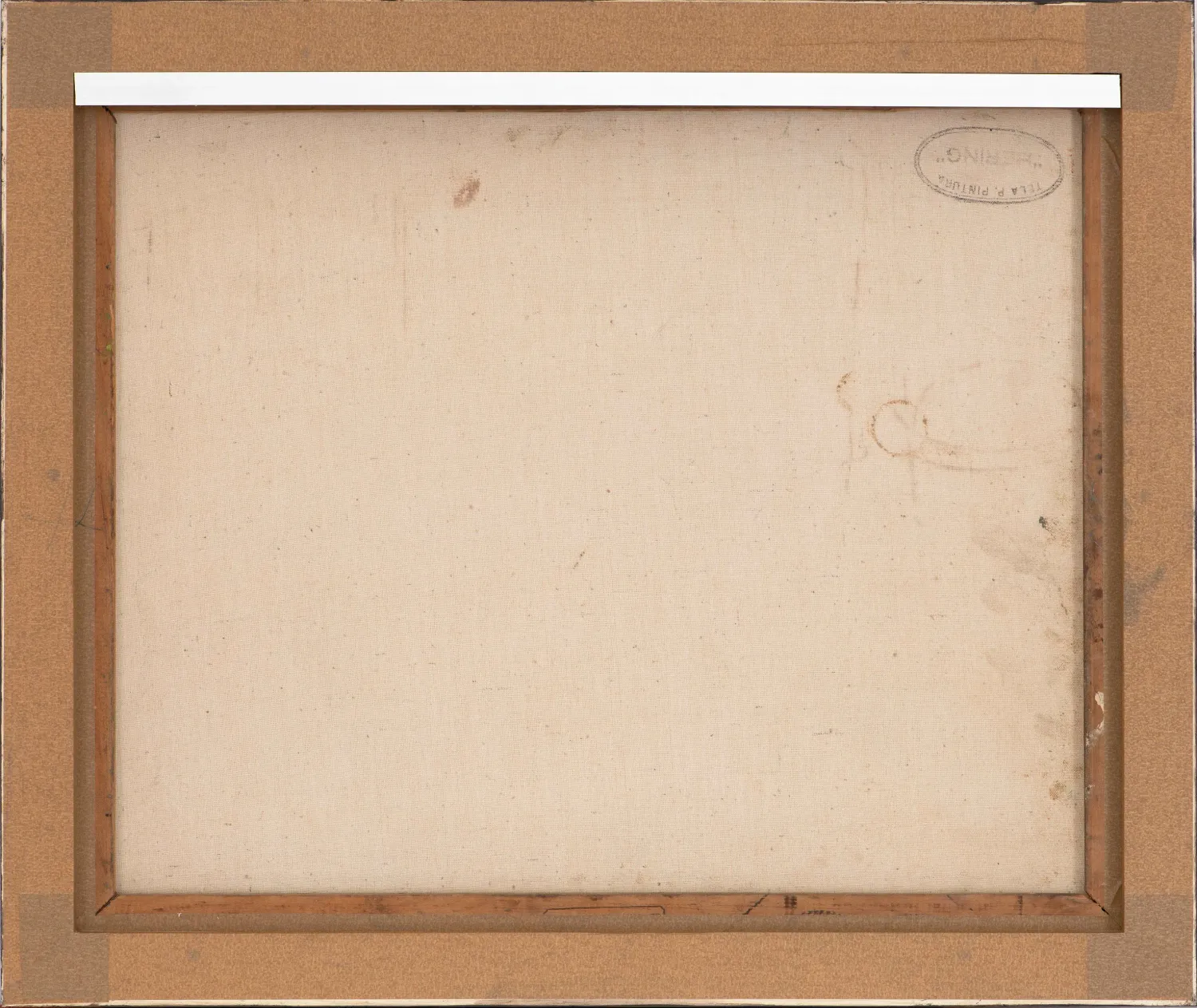
Heitor dos Prazeres
Untitled, 1953
Oil on canvas
43 x 54 cm
16 ⅞ x 21 ¼ in
Years later, Heitor became one of the founders of the first samba schools – Mangueira, Portela and Estácio de Sá. The musicality of samba comes from the adaptation of religious chants from the Candomblé rituals and provides a fusion between ancestral and popular culture. Heitor was Ogã Aladê-Nilu in Tia Ciata's terreiro, the person responsible for musicality and ancestral knowledge linked to musicality.
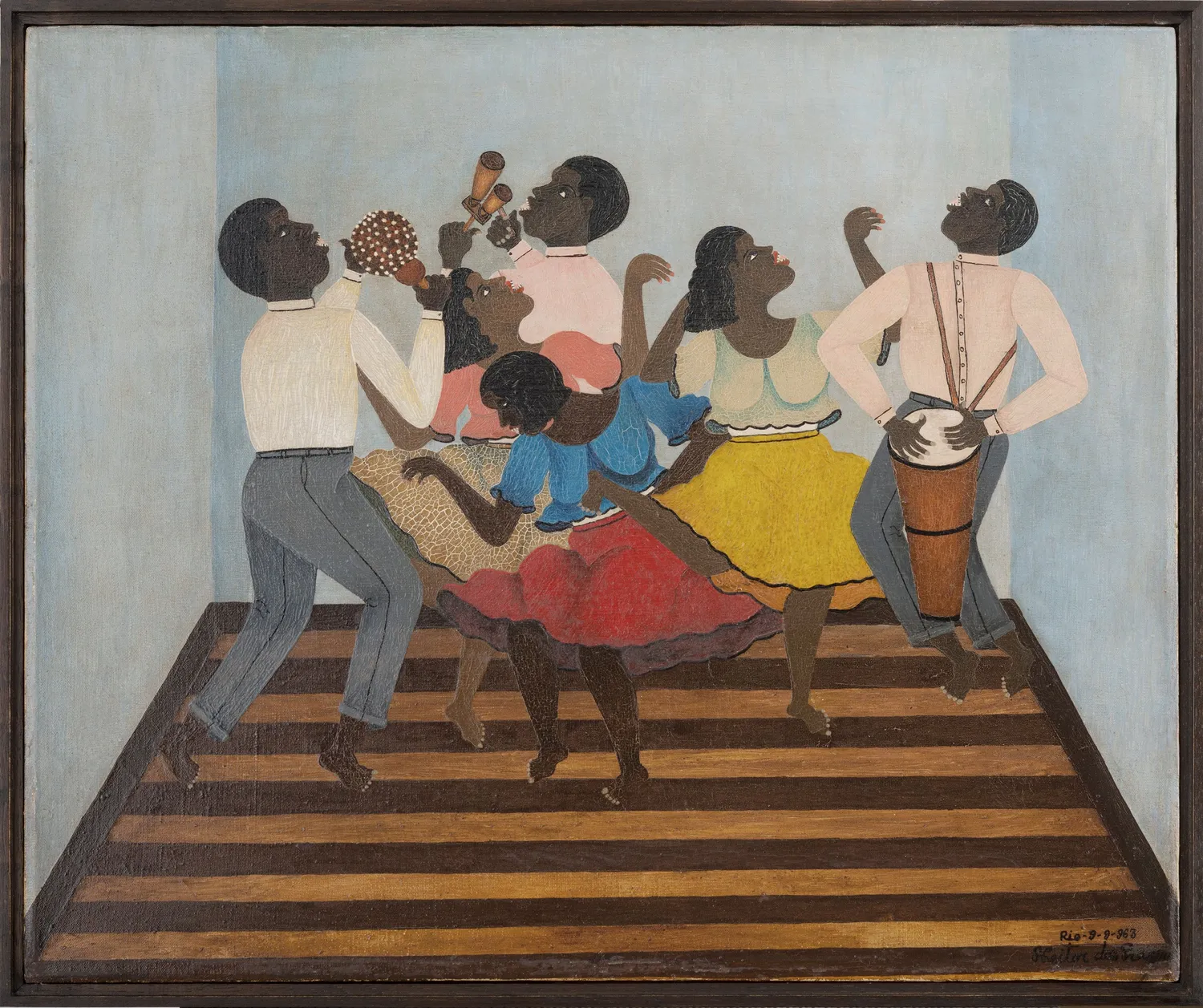

Heitor dos Prazeres
Untitled, 1963
Oil on canvas
45 x 55 cm
17 ¾ x 21 ⅝ in
However, at Heitor's house the piano was only played on festive days, and Heitor strummed the keys whenever he could. His uncle Hilário, who saw that the boy was attracted to music, gave his nephew a cavaquinho. He never parted with it again, and his nickname soon became Mano Heitor do Cavaco.
Heitor's paintings often show instruments in the hands of his characters, or even leaning against a wall, as well as street parties and intimate house dances. The furniture disappears and the varnished wooden give way to dances that energize women and men (almost all of whom are Black), impeccably dressed in their stylish clothes made of lacy and colorful fabrics. Heitor sewed his own clothes and was always very elegant, with his refined shoes and straw hat.
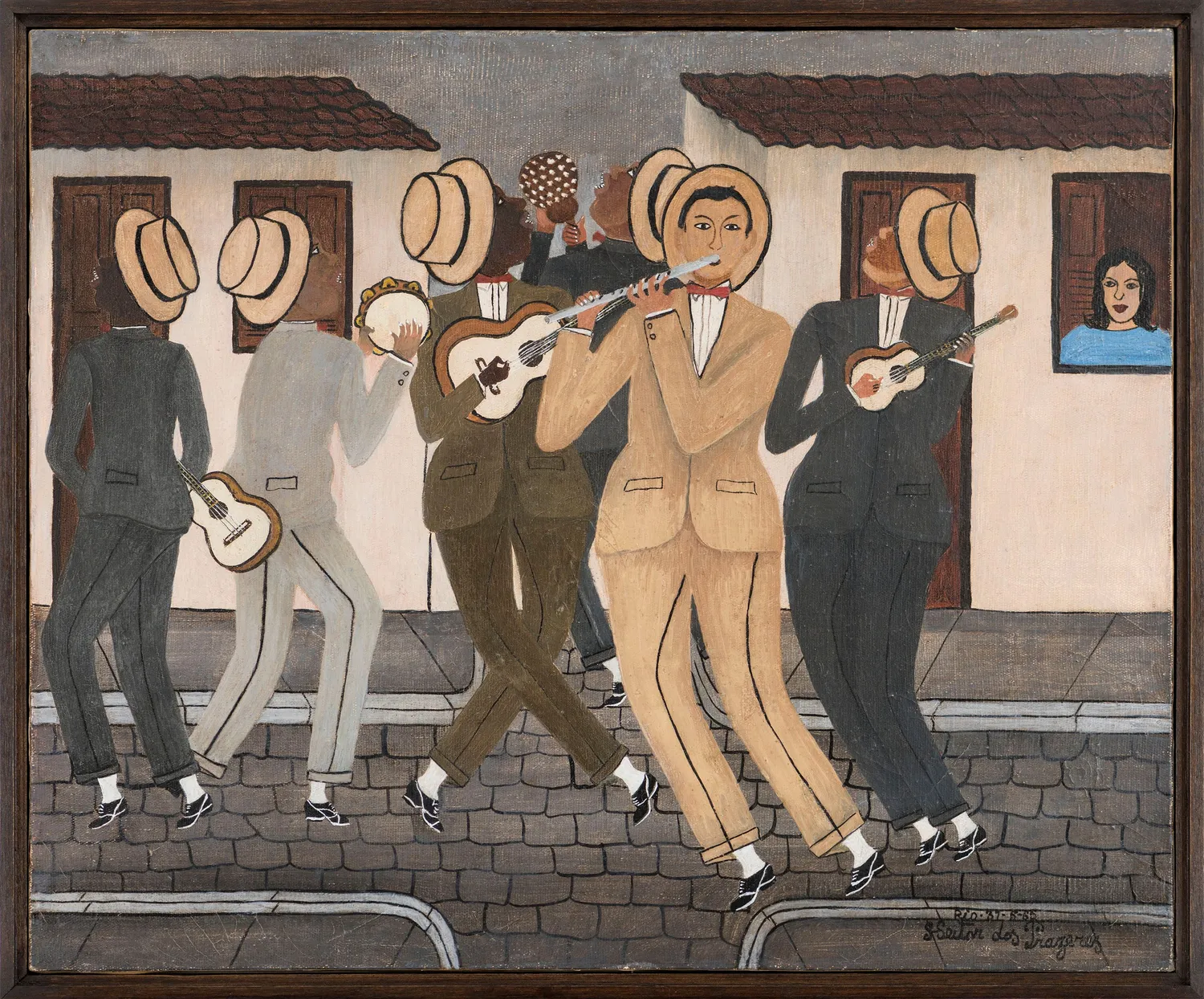

Heitor dos Prazeres
Untitled, 1965
Oil on canvas
38 x 46 cm
15 x 18 ⅛ in
“Wherever he manages to insert himself artistically, he stays true to his origins. He brings with him all that creative charge from Little Africa, which he saw there in Tia Ciata's terreiro. He has remained faithful to his origins throughout his life.”
Glaucea Helena, MASP Pannels: Heitor dos Prazeres: protagonismo e arte, 2018
Heitor do Prazeres' musical career was extensive and notorious. From his time living in Tia Ciata's house in the 1910s until the 1960s, he composed almost 300 songs and created them in partnership with the most important artists of his time, such as Noel Rosa, Herivelto Martins, Paulo da Portela, Nelson Gonçalves and André Filho. Noel Rosa would later partner Heitor dos Prazeres in one of the most successful Carnival songs of all time: Pierrot apaixonado.
The samba Mulher de malando, composed by Heitor, won the prize for best composition at the 1932 Carnival, the year of the first official Carnival song contest, sponsored by the Rio de Janeiro City Hall and the newspaper Mundo Sportivo. The winning school was Mangueira, co-founded by the artist.

Cover of the album Macumba, Heitor dos Prazeres e sua Gente (1955) - Front
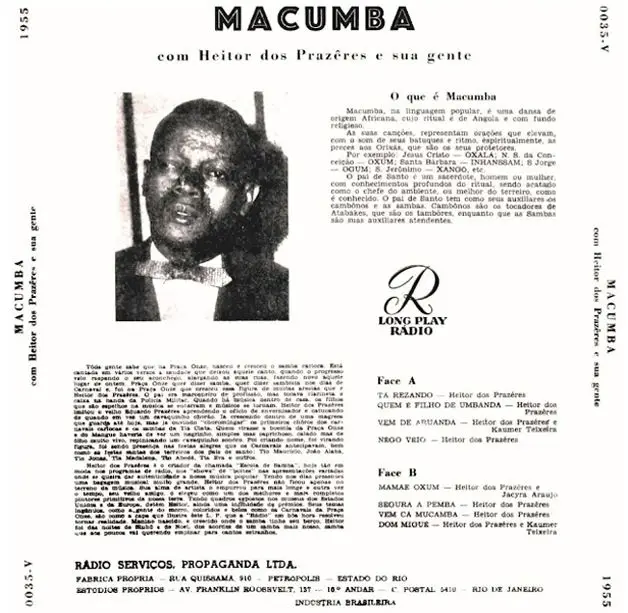
Cover of the album Macumba, “Heitor dos Prazeres e sua Gente” (1955) - Back
Most of Heitor's musical career was with his group Heitor dos Prazeres e sua Gente, formed in the 1930s, in which the artist was accompanied by the “pastoras”, as they called themselves. They sang and danced to all the popular rhythms and wore different costumes every season, designed by Heitor and produced by the chorus women.
“My mother, who together with her sister, aunt Natividade, was a chorister in the ensemble of Heitor dos Prazeres e sua Gente, used to tell us about traveling to shows all over Brazil, about filming, casinos, circuses, theaters and parties, in late afternoon conversations when families would get together to listen to the radio and tell stories in between songs.”
Heitor dos Prazeres Filho, in Heitor dos Prazeres: sua arte e seu tempo, 2003
Exhibition view, Heitor dos Prazeres é meu nome, Centro Cultural Banco do Brasil – CCBB Rio de Janeiro (2023). Photo: Tânia Rego / Agência Brasil
The group took part in shows, performances and auditorium programs at Rádio Nacional, where Heitor worked from 1943 to 1964 as a rhythm player with the group Cassino da Urca. Heitor took part in several performances by guest artists, including the famous American dancer Josephine Baker, who was in Rio de Janeiro in 1939. It was Heitor who organized the visit of the celebrity and Orson Wells – who was producing a film in the city at the time and hired Heitor as his helper – to the Candomblé terreiro of Mãe Adedé. On that memorable evening, rumored to have lasted until the morning of the next day, Heitor met journalist Carlos Cavalcanti, who encouraged Heitor's entry into the visual arts.
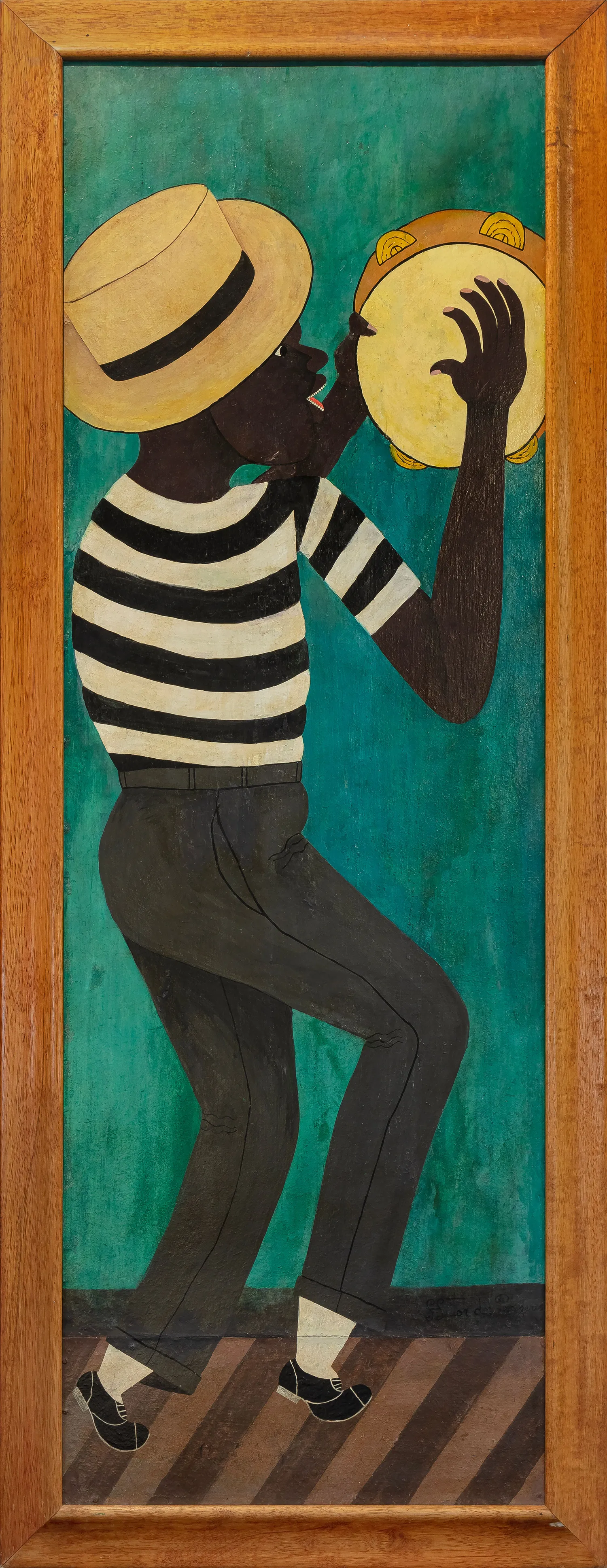
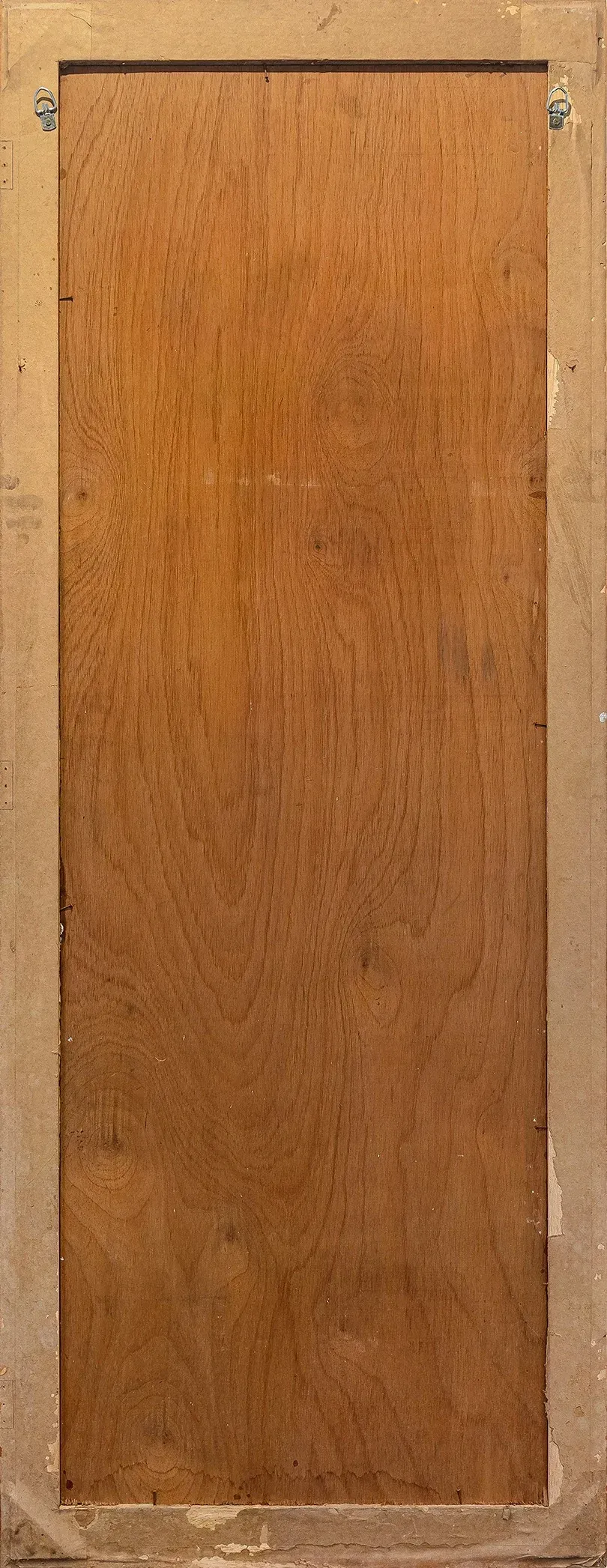
Heitor dos Prazeres
Untitled, 1960's
Oil on wood
156 x 55 cm
61 ⅜ x 21 ⅝ in
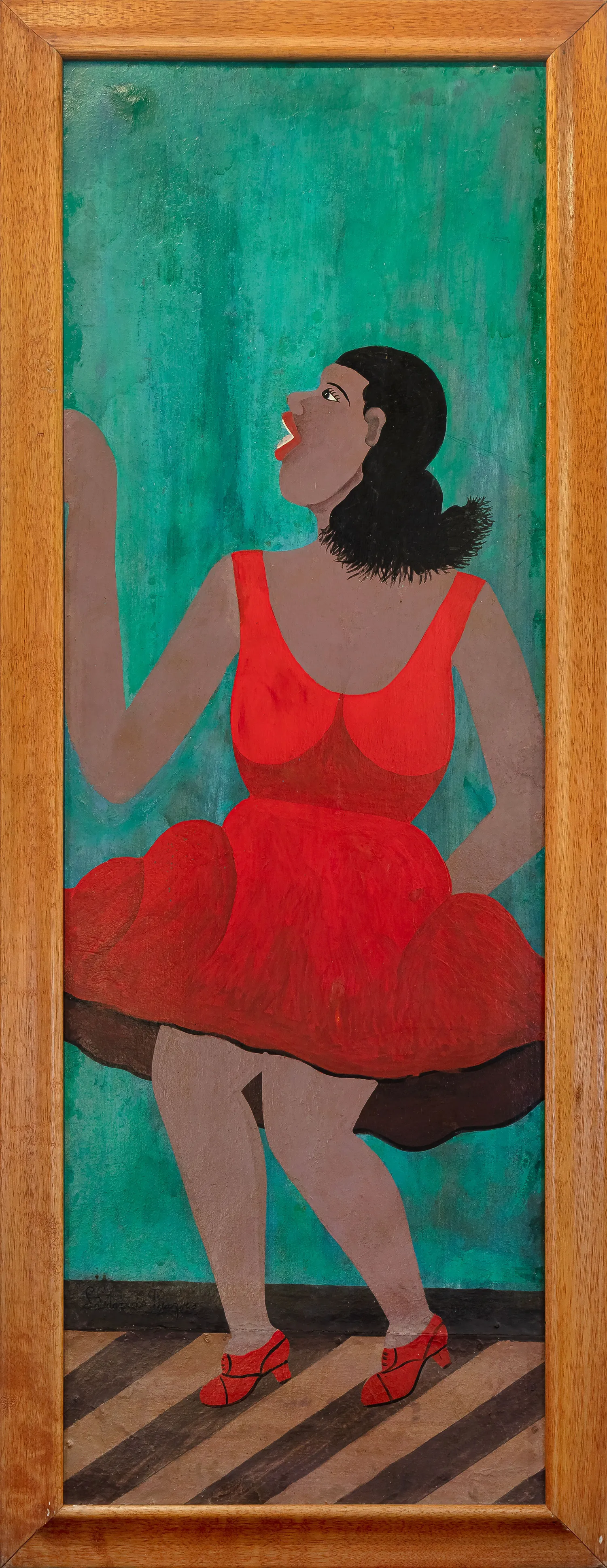
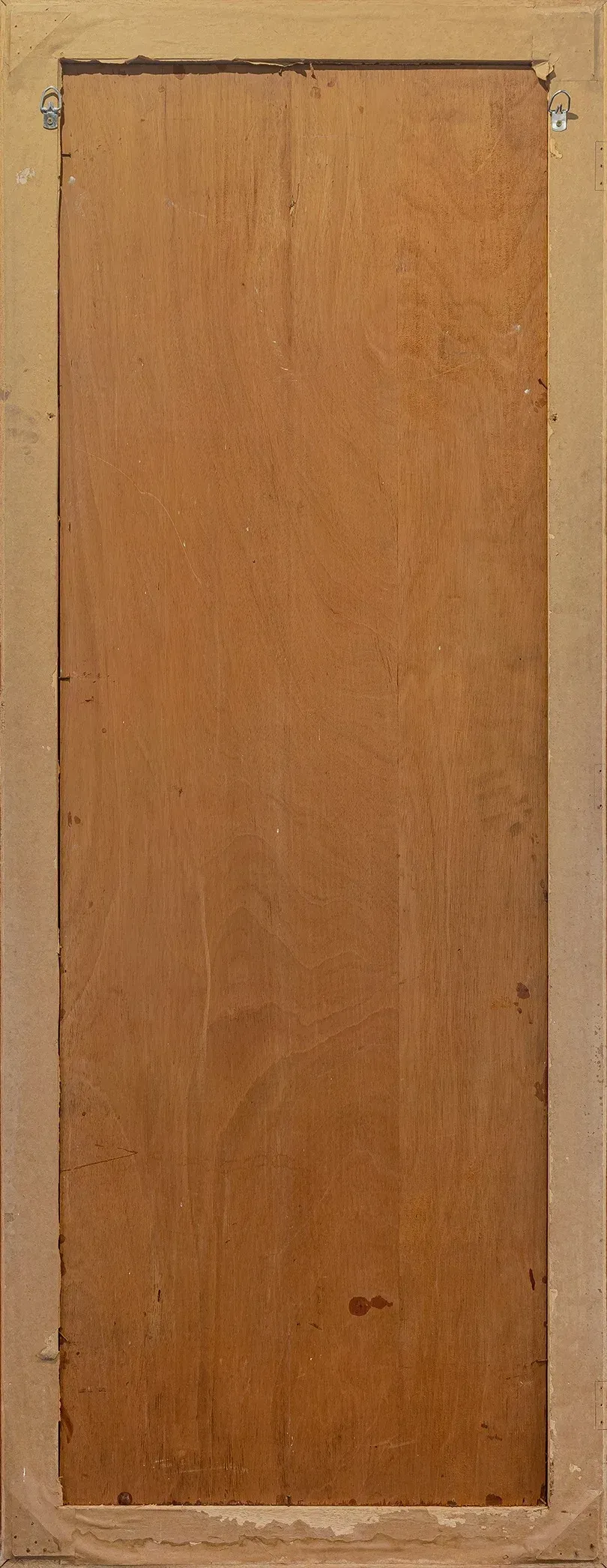
Heitor dos Prazeres
Untitled, 1960's
Oil on wood
156 x 55 cm
61 ⅜ x 21 ⅝ in
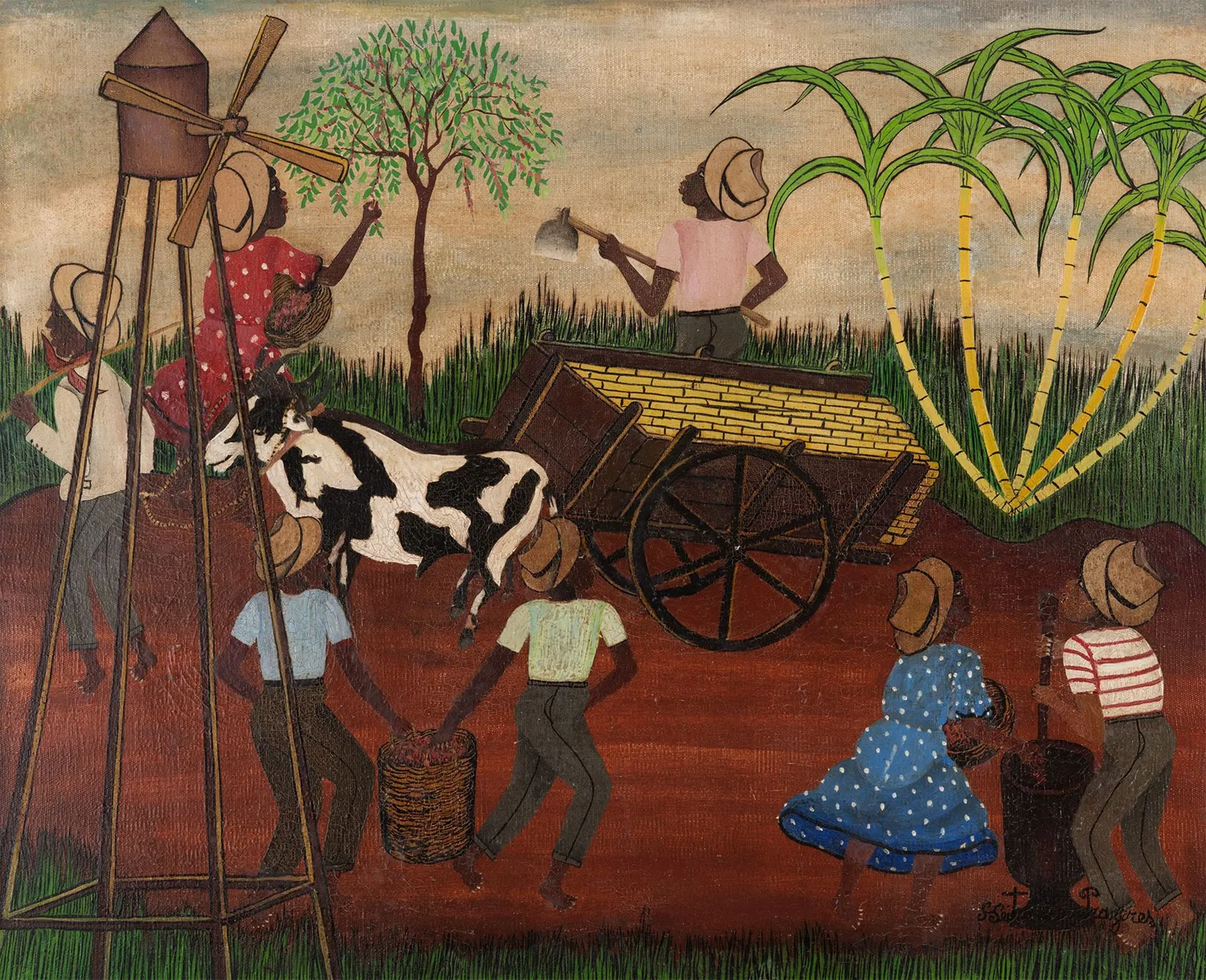
The painting of Heitor dos Prazeres
Visuality and expressiveness
Heitor dos Prazeres began painting in 1937, after the death of his first wife, Glória. Initially, his work was destined for the walls of his house and his sheet music, which he decorated with colorfully dressed characters. Heitor's career as a visual artist began when journalist Carlos Cavalcanti, a friend and cavaquinho student, noticed the composer's recurring doodles on bar napkins and encouraged him to paint. He was also encouraged by the caricaturist, photographer, journalist and educator Augusto Rodrigues.
“My painting is important to me. It's an escape from my pain, my sorrows, my suffering, my passions. I feel like I'm in another world, a world of suffering, a world of enjoyment, a world of happiness. A happy world. Yes, painting gives me all that joy, it gives me all that richness for me.”
Heitor dos Prazeres, testimony for the documentary by Antonio Carlos Fontoura, 1966
Still in 1937, Heitor – whose pictorial research began with gouache – took part in an exhibition of Latin American art in London with a painting. The exhibit was promoted by the Royal Air Force (RAF) to benefit the victims of the Second World War.
According to reports, the exhibition was visited by the future Queen Elizabeth II, who was enchanted by Heitor's strokes and colors in the canvas Festa de São João. The princess, who acquired the work on the occasion, reportedly asked: “But where does this extraordinary painter come from?”. With the prestige of the event, Heitor had his first solo exhibition, albeit a small one, at the academic directory of the Escola de Belas Artes in Belo Horizonte, city capital of the State of Minas Gerais.
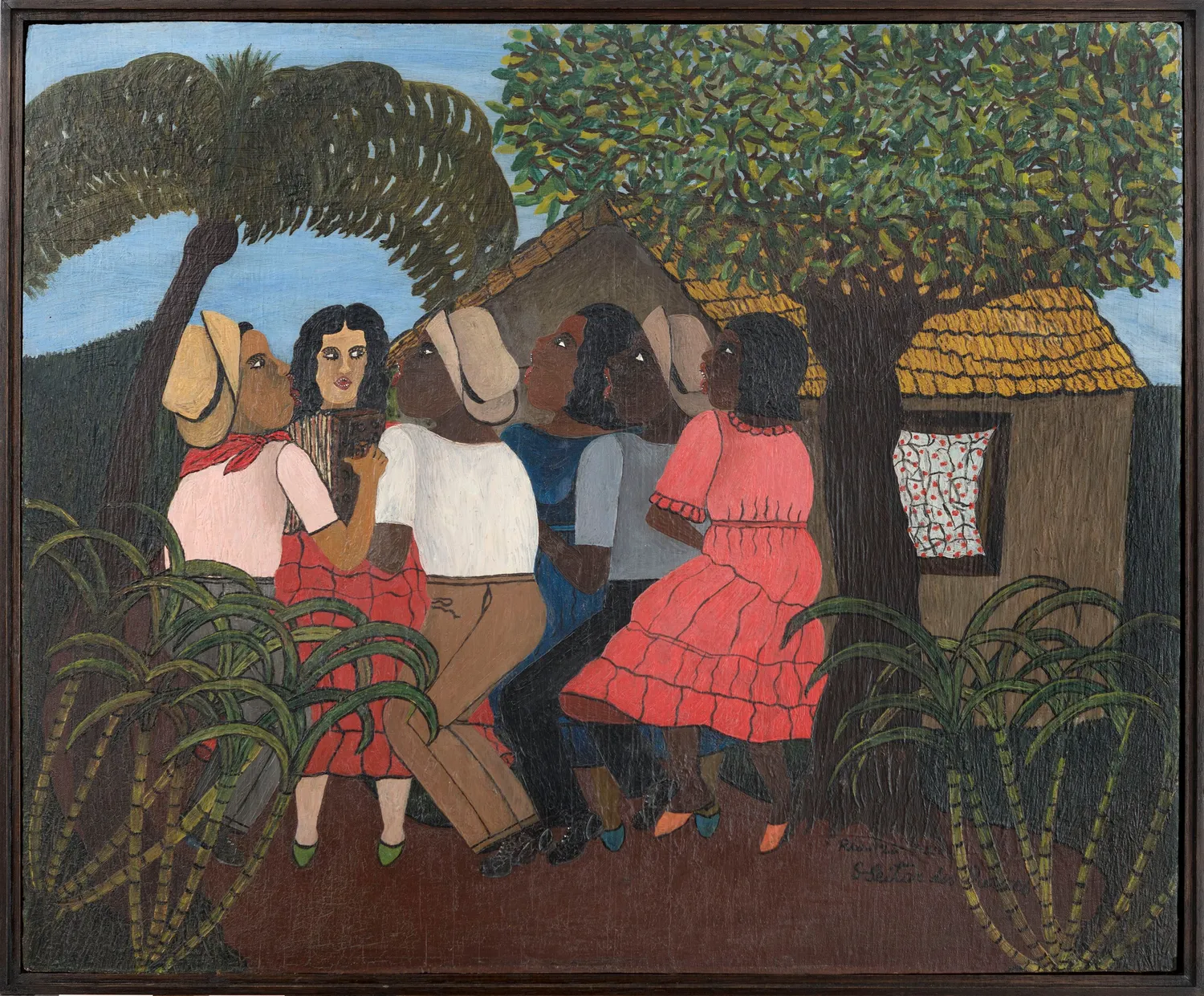
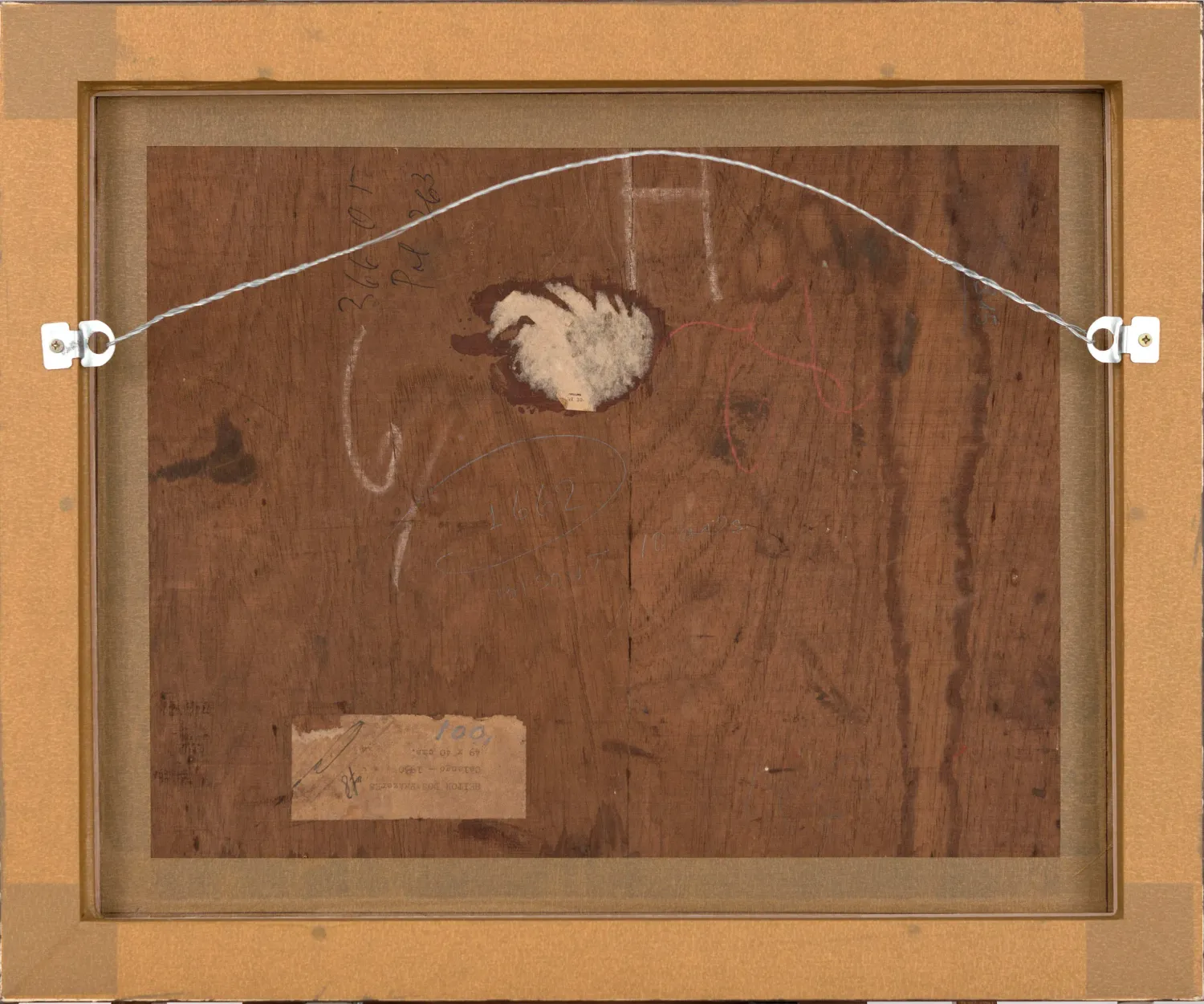
Heitor dos Prazeres
Calango, 1950
Oil on wood
42.0 x 50.5 cm
16 ½ x 19 ¾ in
From this first phase of production comes Sonho [Dream] (1939), which shows a scene of a young man dreaming in his bedroom, with photographs and paintings on the wall, next to a cavaquinho case. The scene, seen from above, in earthy tones, reveals a memory (or desire), embodied by a female figure floating beside the bed.

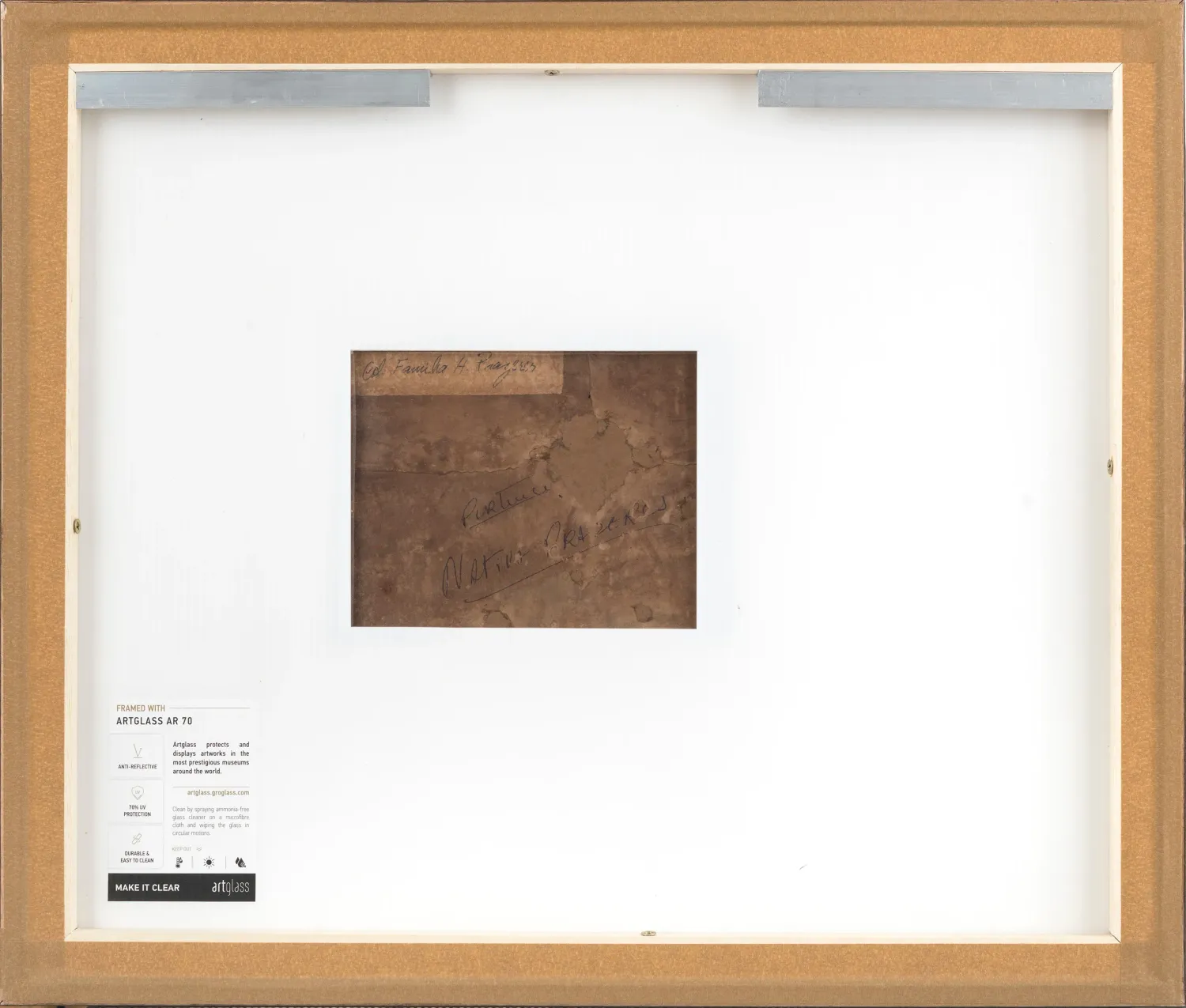
Heitor dos Prazeres
Sonho, 1939
Gouache on paperboard
19.5 x 27.2 cm
7 ⅝ x 10 ¾ in
His unmistakable way of representing bodies and landscapes, and the visual force of dance in his paintings, has a strong sense of cultural identity. The work in rural areas, children's games, leisure and religiosity are some of the themes he represented in works inspired by the people and places he visited throughout his life.
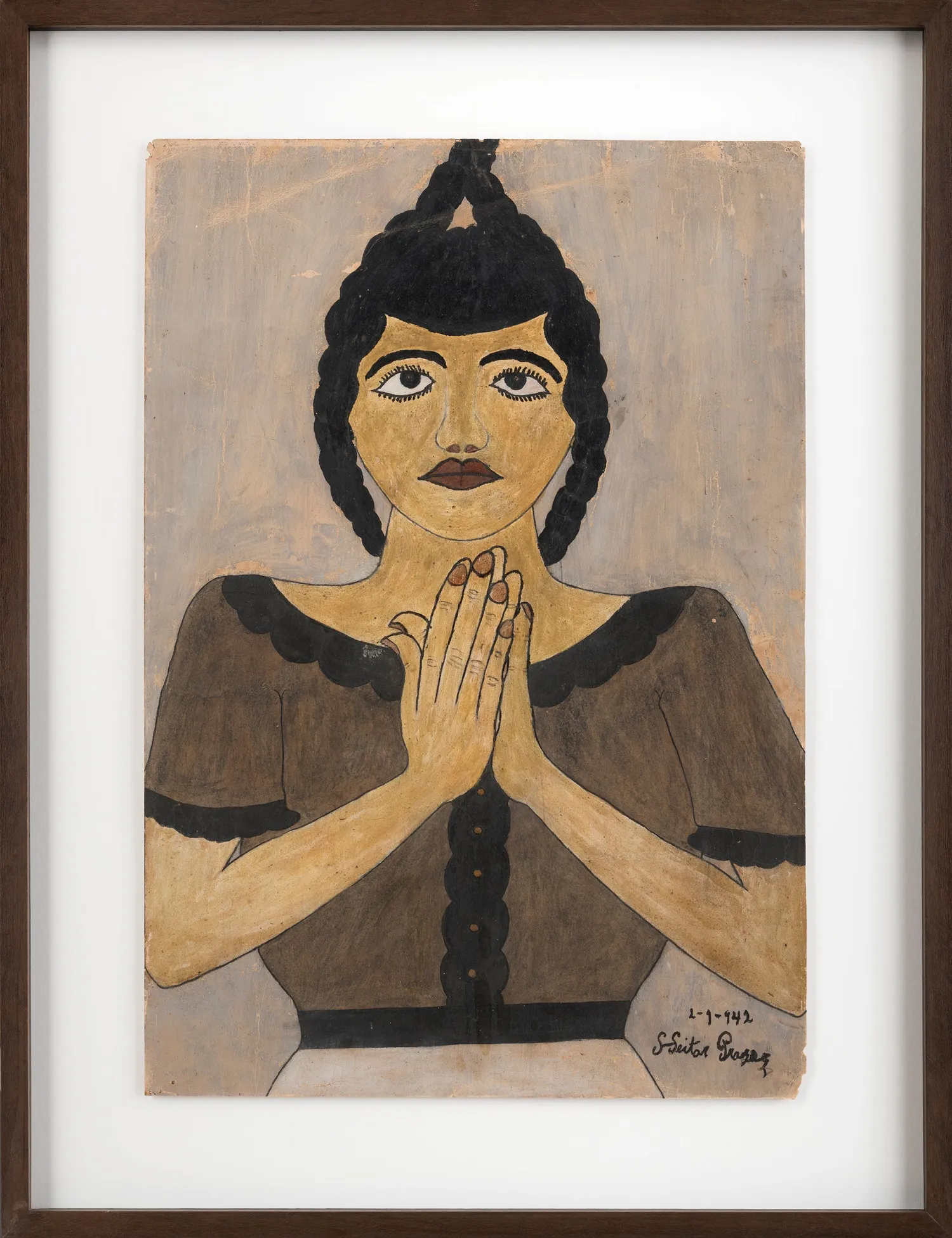

Heitor dos Prazeres
Untitled, 1942
Oil on paperboard
53.5 x 36.5 cm
21 x 14 ⅜ in
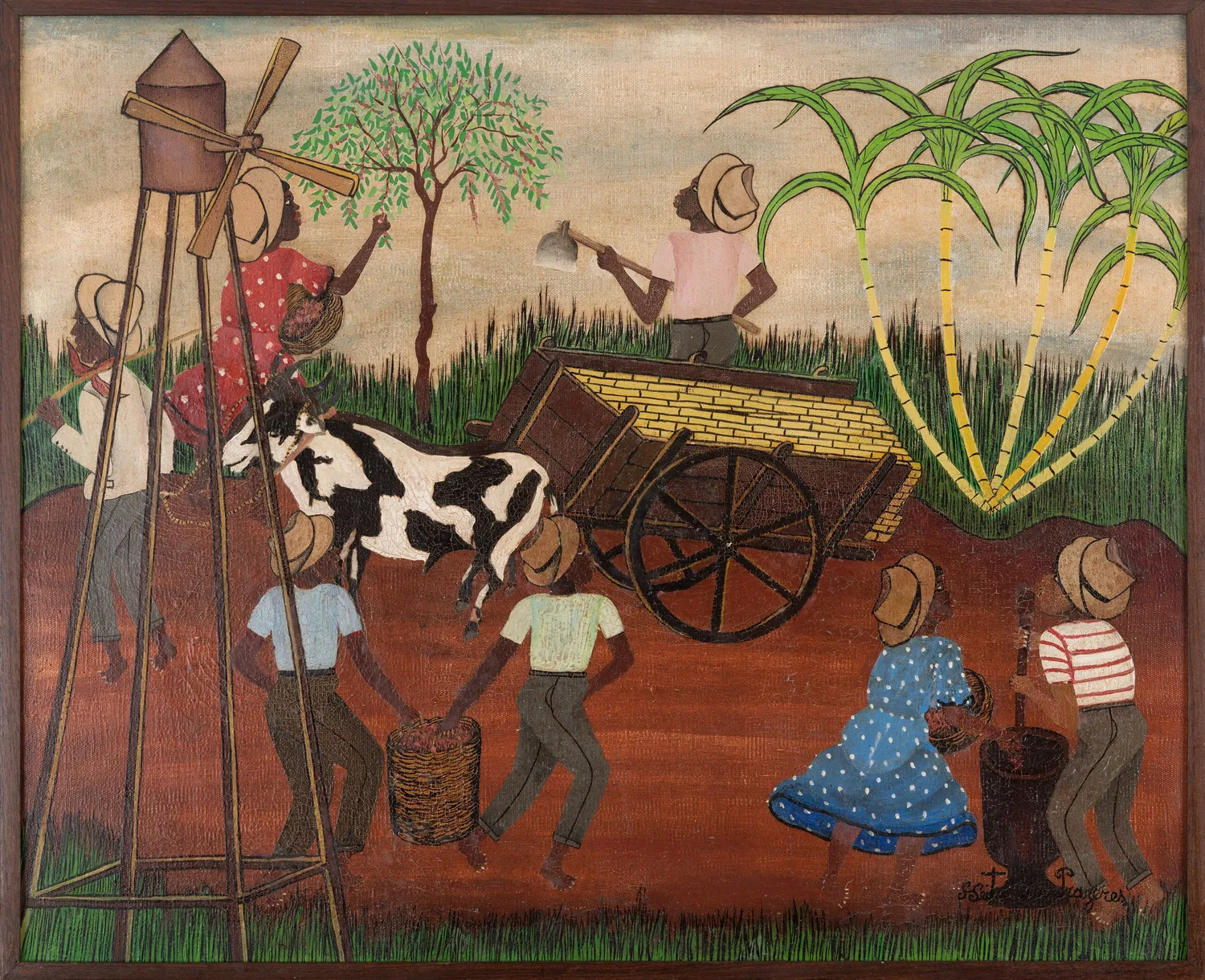

Heitor dos Prazeres
Figura e carro de bois na plantação de cana, 1960's
Oil on canvas
50.0 x 61.5 cm
19 ¾ x 24 ¼ in

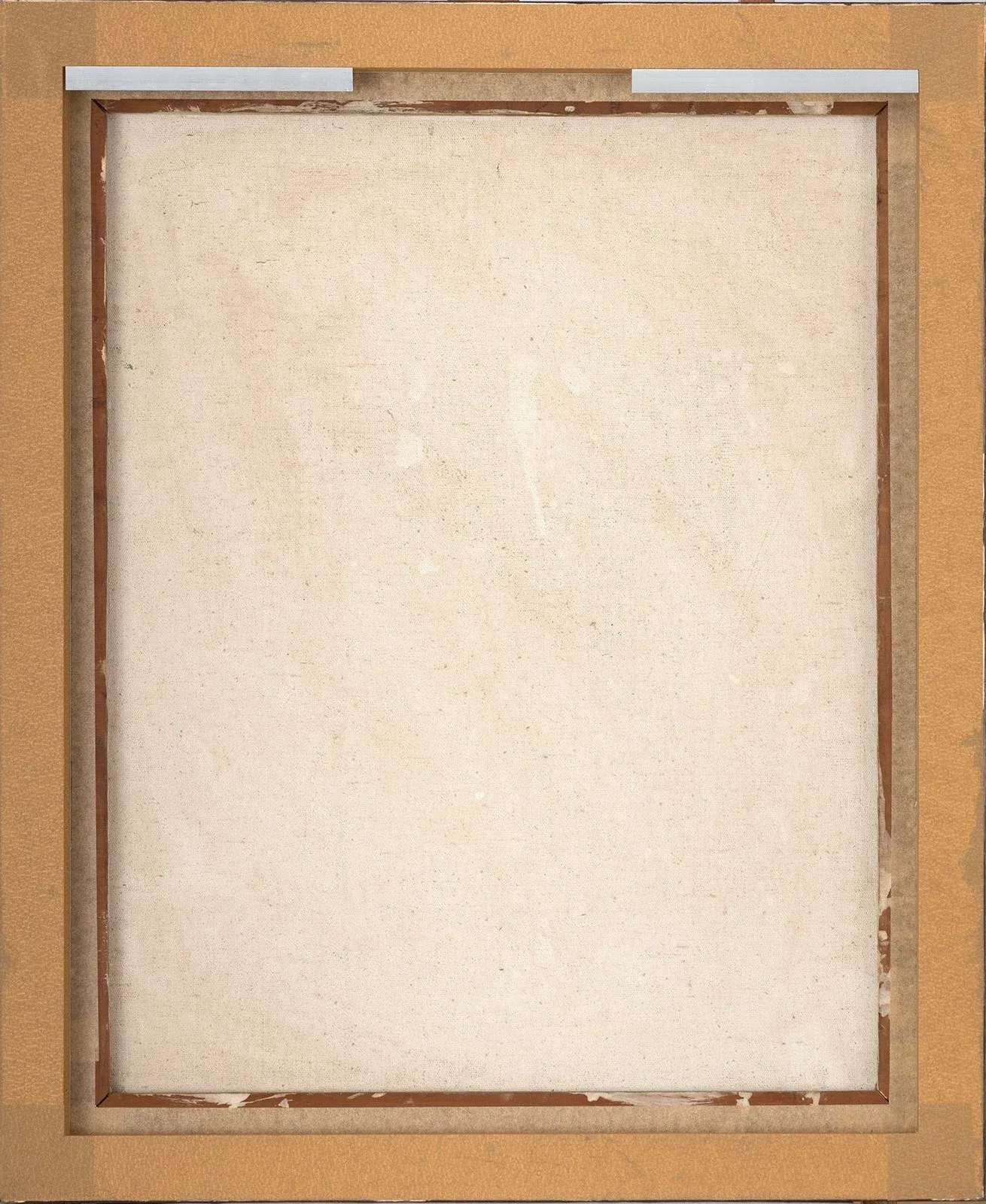
Heitor dos Prazeres
Untitled, n.d.
Oil on canvas
61 x 50 cm
24 x 19 ¾ in
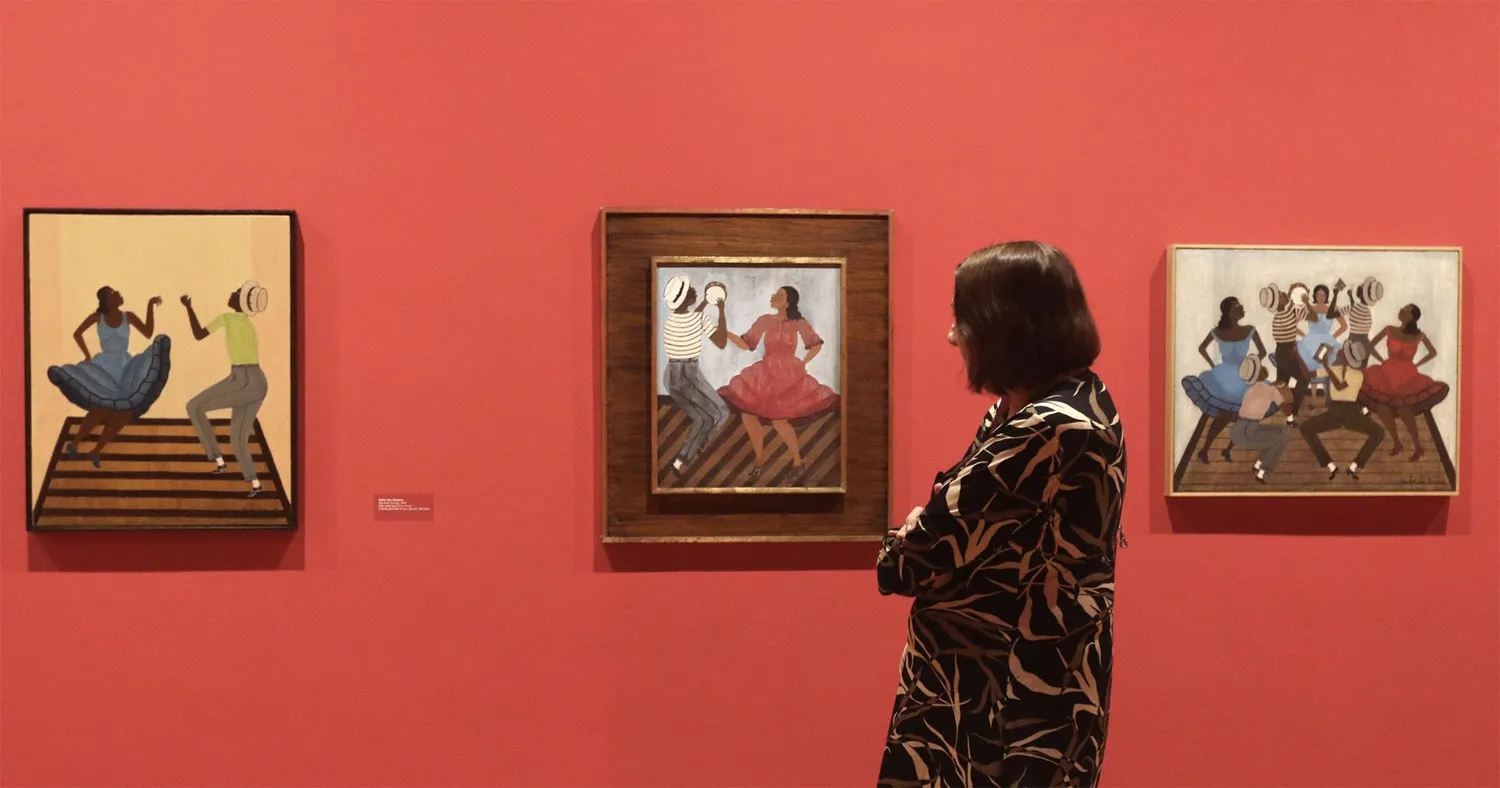
Exhibition view Heitor dos Prazeres é meu nome, Centro Cultural Banco do Brasil – CCBB Rio de Janeiro (2023). Photo: Tânia Rego / Agência Brasil
Institutionalization and prestige
From Biennials to the art market
In 1951, Heitor dos Prazeres’ work Moenda [Milling] (1951) was awarded a prize at the 1st Bienal de São Paulo, held by the Museu de Arte Moderna de São Paulo, and is currently in the collection of the Museu de Arte Contemporânea of the Universidade de São Paulo - MAC USP.
“With his figurative painting at the 1st Bienal de São Paulo, Heitor enters a field of narrative dispute about Brazilian reality and the legacies of modernity. By creating everyday scenes of Black people, he signals another Brazilian reality, one that differs from the new geometric and abstract narratives.”
Raquel Barreto, Haroldo Campos, Pablo León de la Barra, in Heitor dos Prazeres é meu nome, 2024, p.149
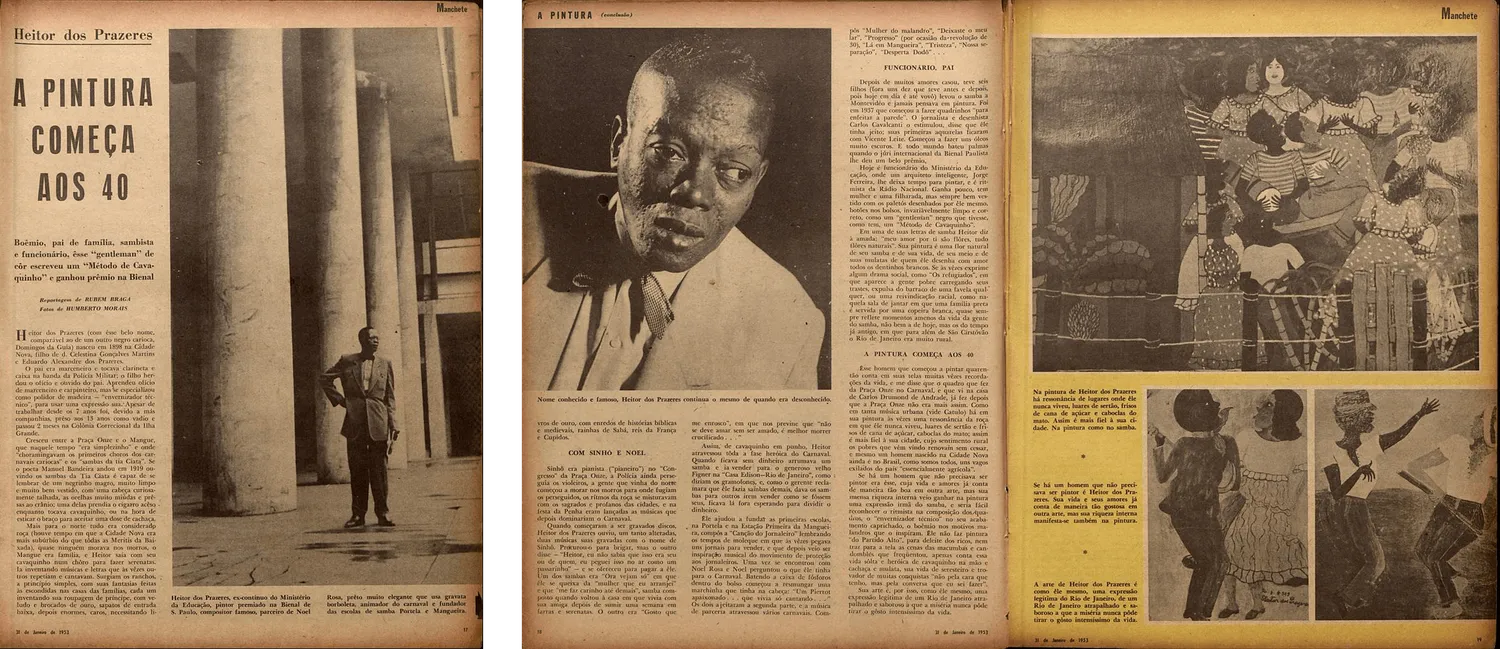
A pintura começa aos 40 [Painting Begins at 40], Revista Manchete (1953)
The following year, his works Mercado [Market] (1951) and Batuque [Drumming] (1952) took part in the 26. International Art Exhibition - La biennale de Venezia alongside other contemporary artists such as Alfredo Volpi, Guignard, Cássio M'Boy and Maria Leontina. In 1953, the artist was given a Special Room at the 2nd Bienal de São Paulo, curated by art critic and writer Sérgio Milliet, in which four of his paintings were exhibited. He also took part in the 1957 edition of the Bienal de São Paulo (in the section Plastic Arts of the Theater), 1961 and 1979 (the latter posthumously).
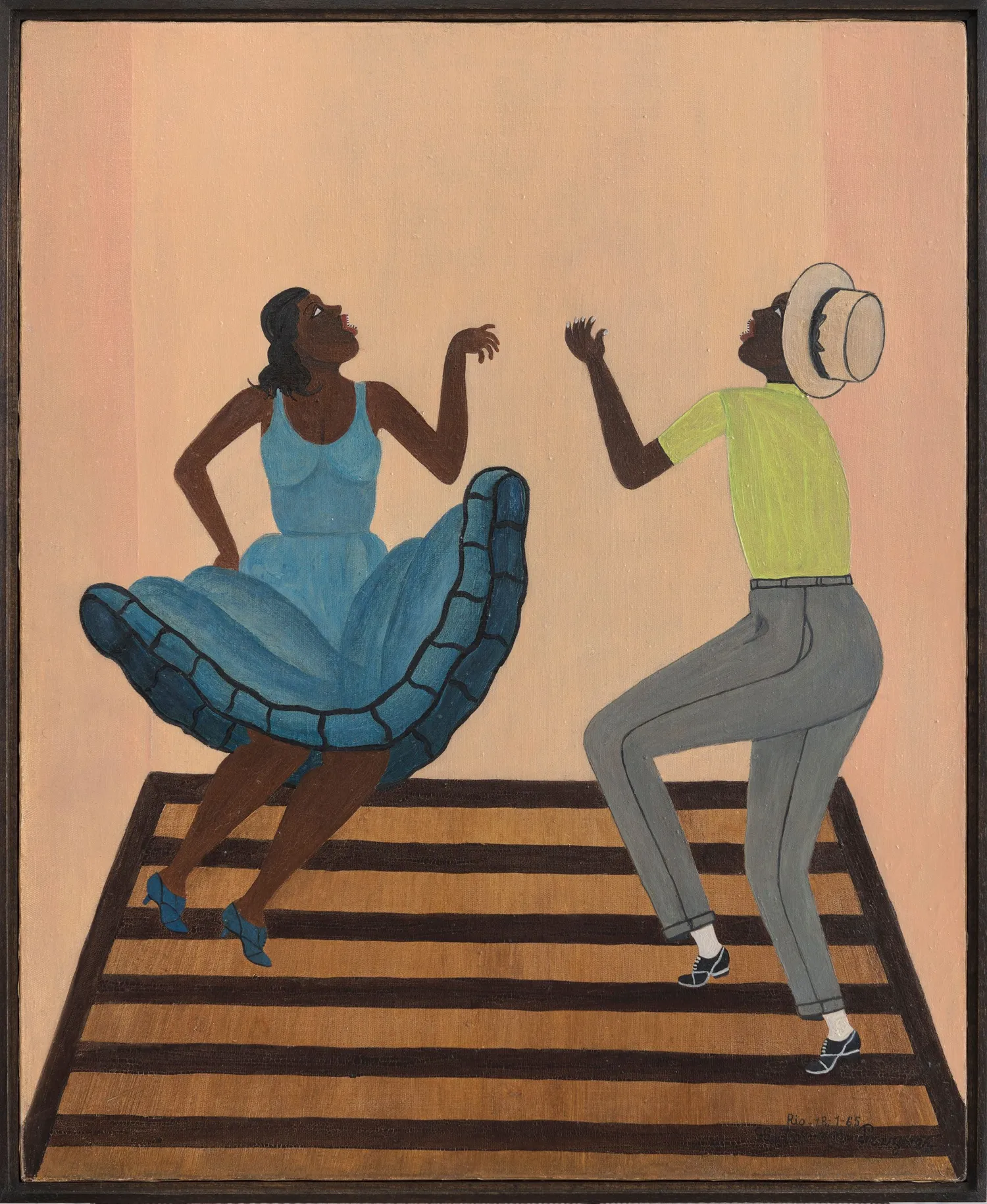
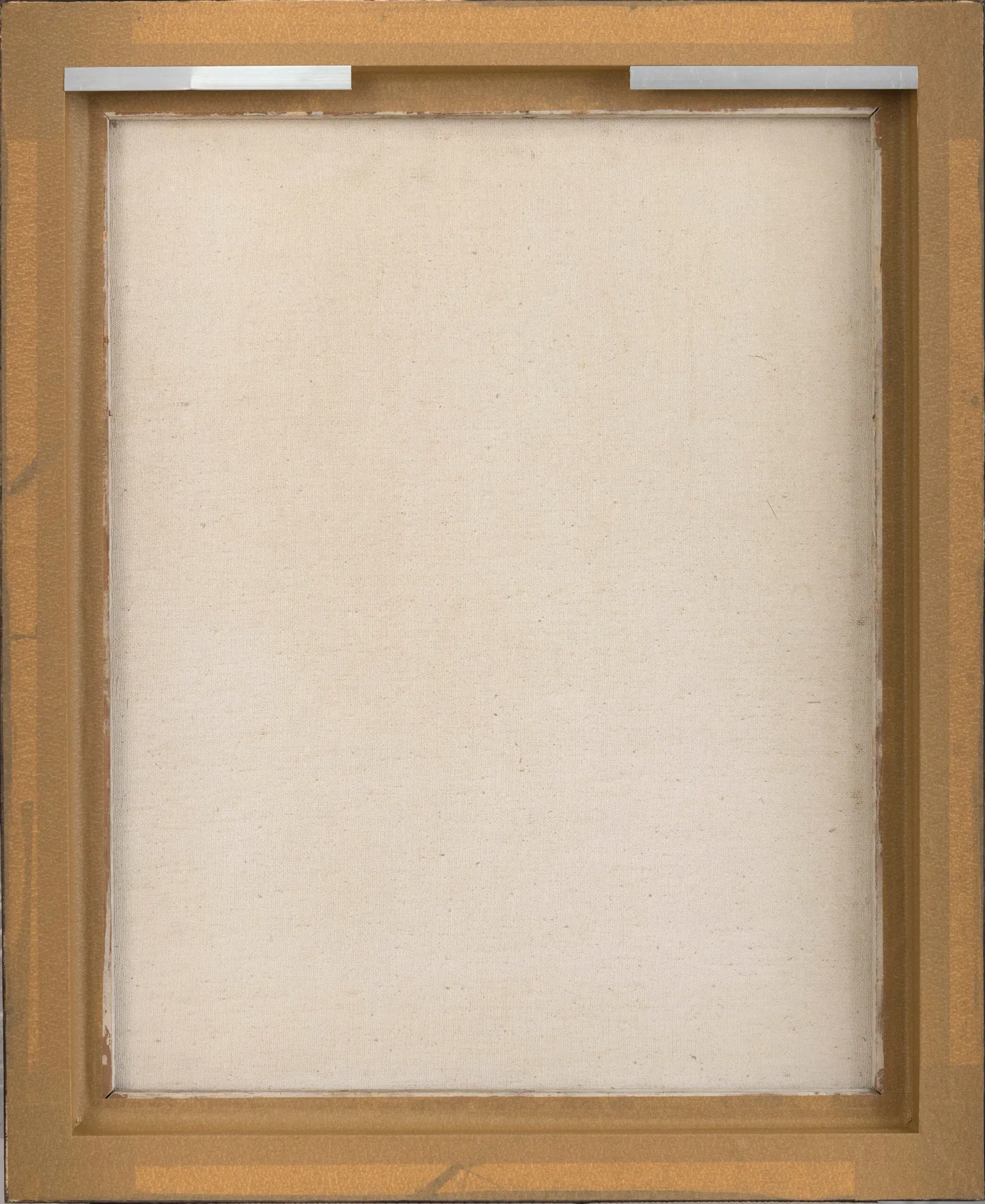
Heitor dos Prazeres
Untitled, 1965
Oil on canvas
61 x 50 cm
24 x 19 ¾ in
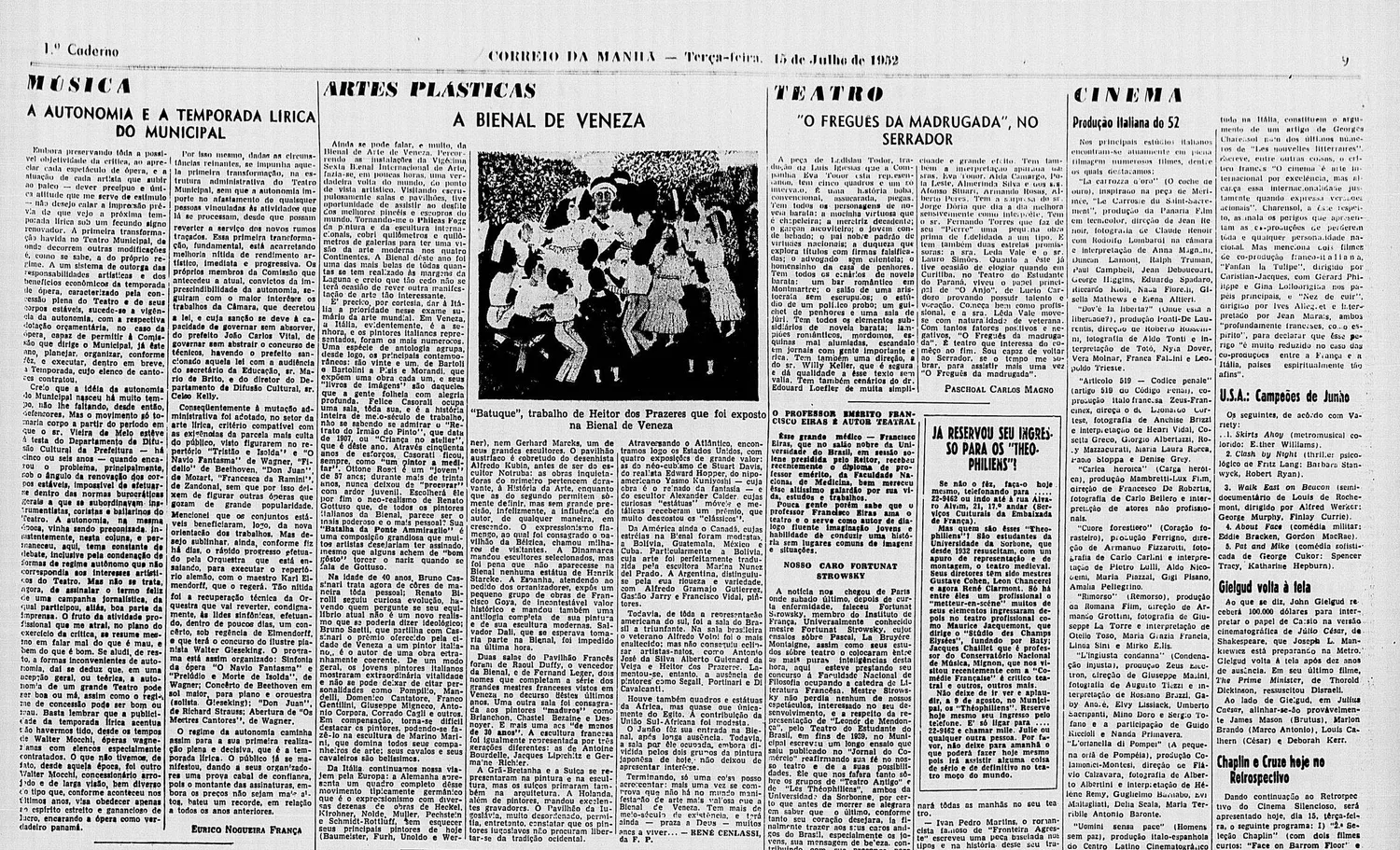
Correio da Manhã newspaper, 15/07/1952 reports Heitor dos Prazeres' works at the 26. Venice Biennale
The 1950s were marked by an increase in the notoriety and recognition of Heitor do Prazeres' work in all its aspects, as a musician, painter, singer, costume designer and set designer.
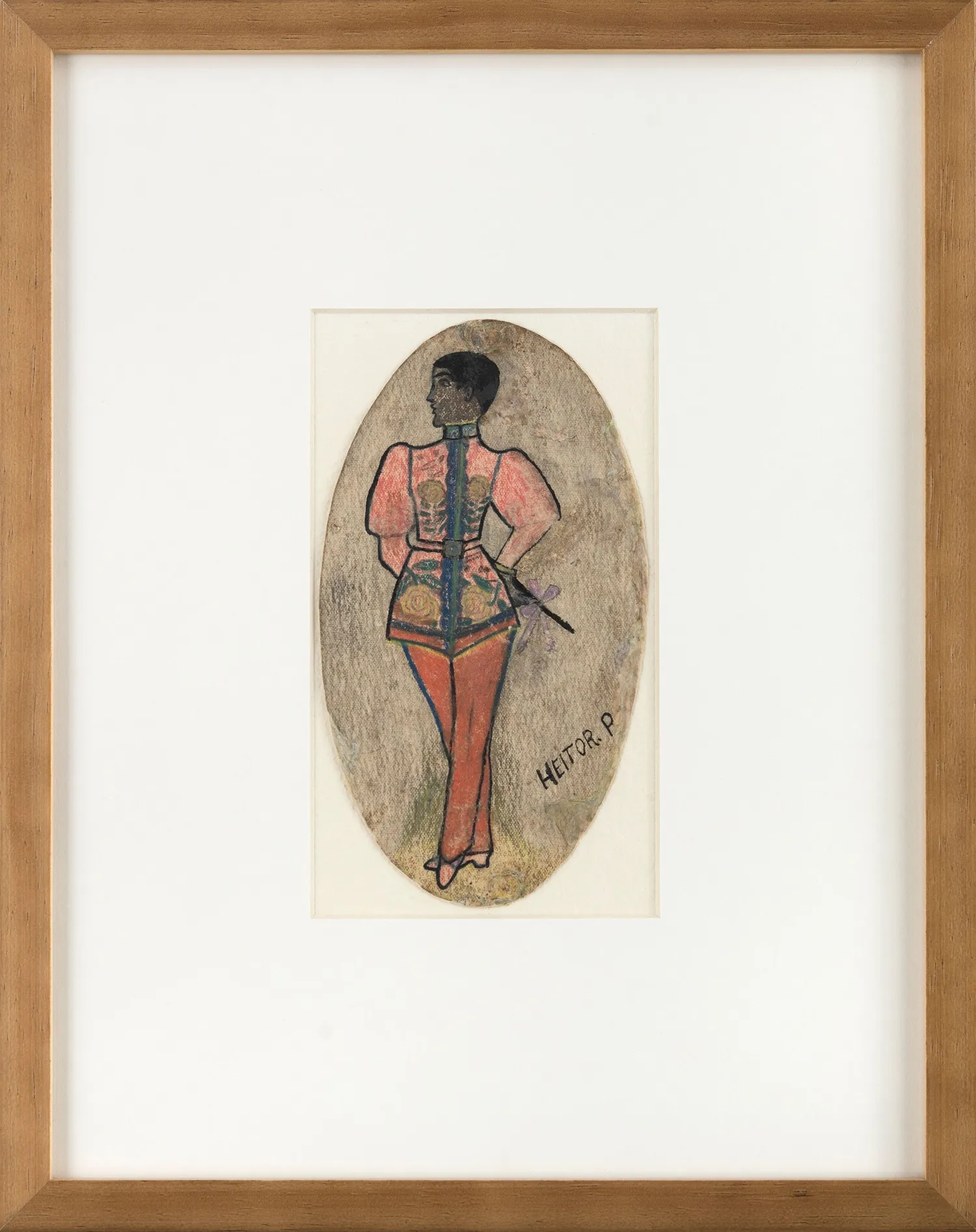
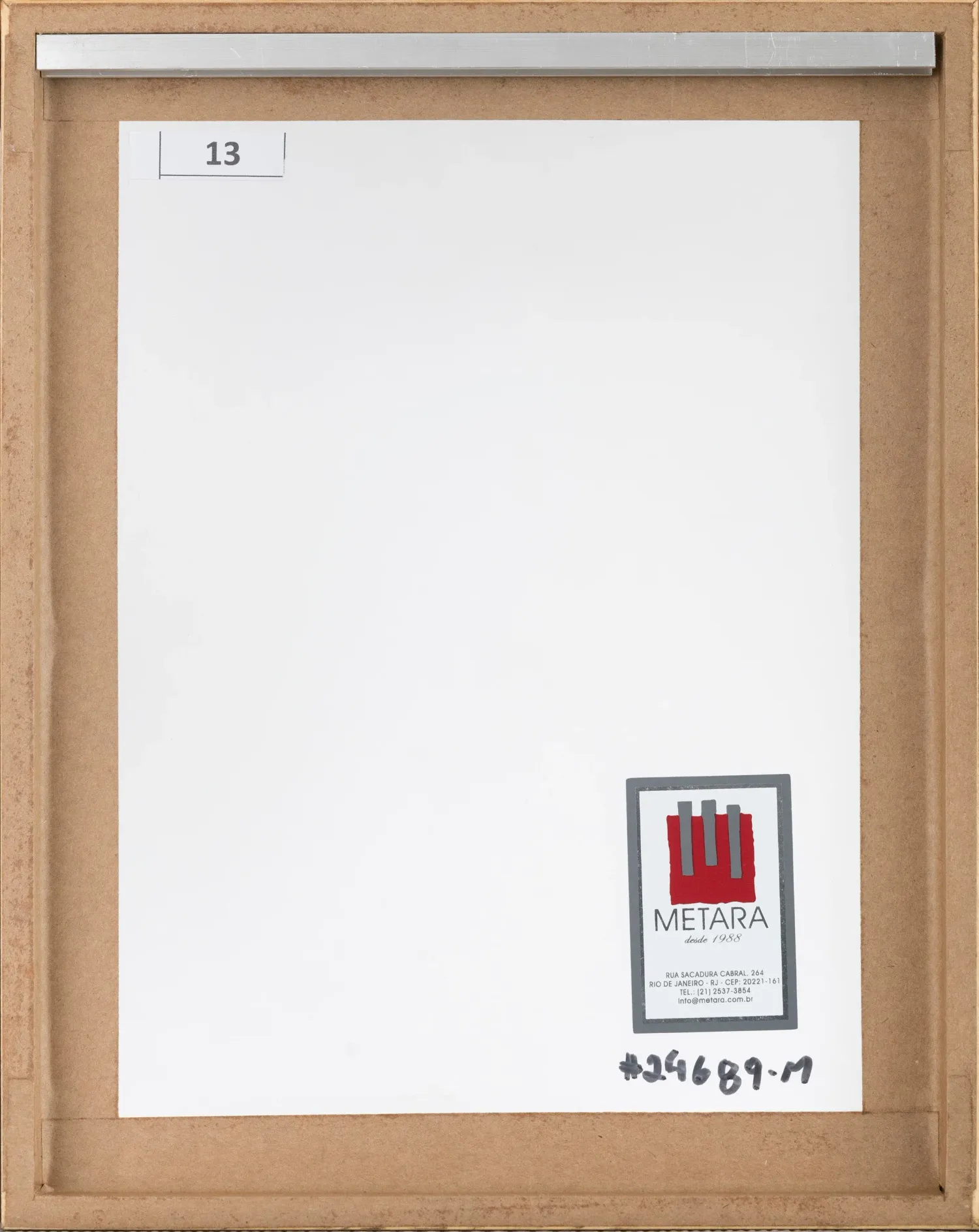
Heitor dos Prazeres
Estudo do General da banda, 1950's
Colored pencil, gouache and graphite on paper
16.0 x 8.5 cm
6 ¼ x 3 ⅜ in
A great moment in the multi-artist's career was his participation in the celebrations for the 4th Centenary of the city of São Paulo in 1954. For this historic event, Heitor was invited to create costumes and sets for the show O guarda-chuva [The Umbrella], produced by the Ballet for the IV Centenary at the Theatro Municipal, a space reserved for the great operas and theatrical productions of São Paulo's elite.
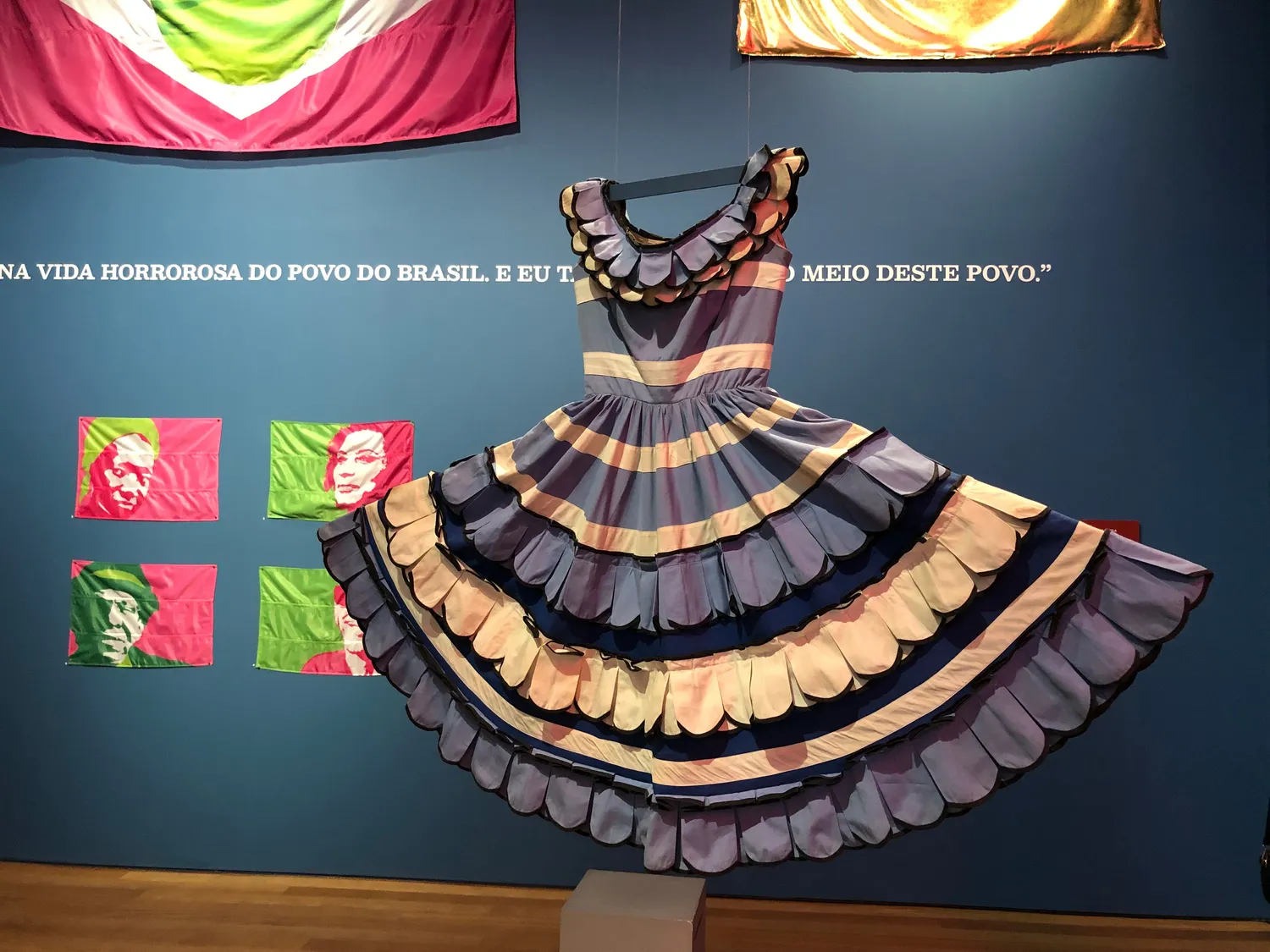
Exhibition view Carolina Maria de Jesus: um Brasil para os brasileiros, IMS Paulista (2022).
In 1963, Heitor was invited to join Rhodia's Brazilian Look project, creating designs for a collection to be presented in Europe. The fabric prints he created referenced objects and symbols from his musical culture and present in Afro-Brazilian visual culture, such as atabaques (a musical instrument) and adinkras (traditional African ideograms).
Heitor also painted pieces of furniture, percussion, tapestries and everyday objects. Just as he did with his musical scores, he applied his style to different purposes and contexts.
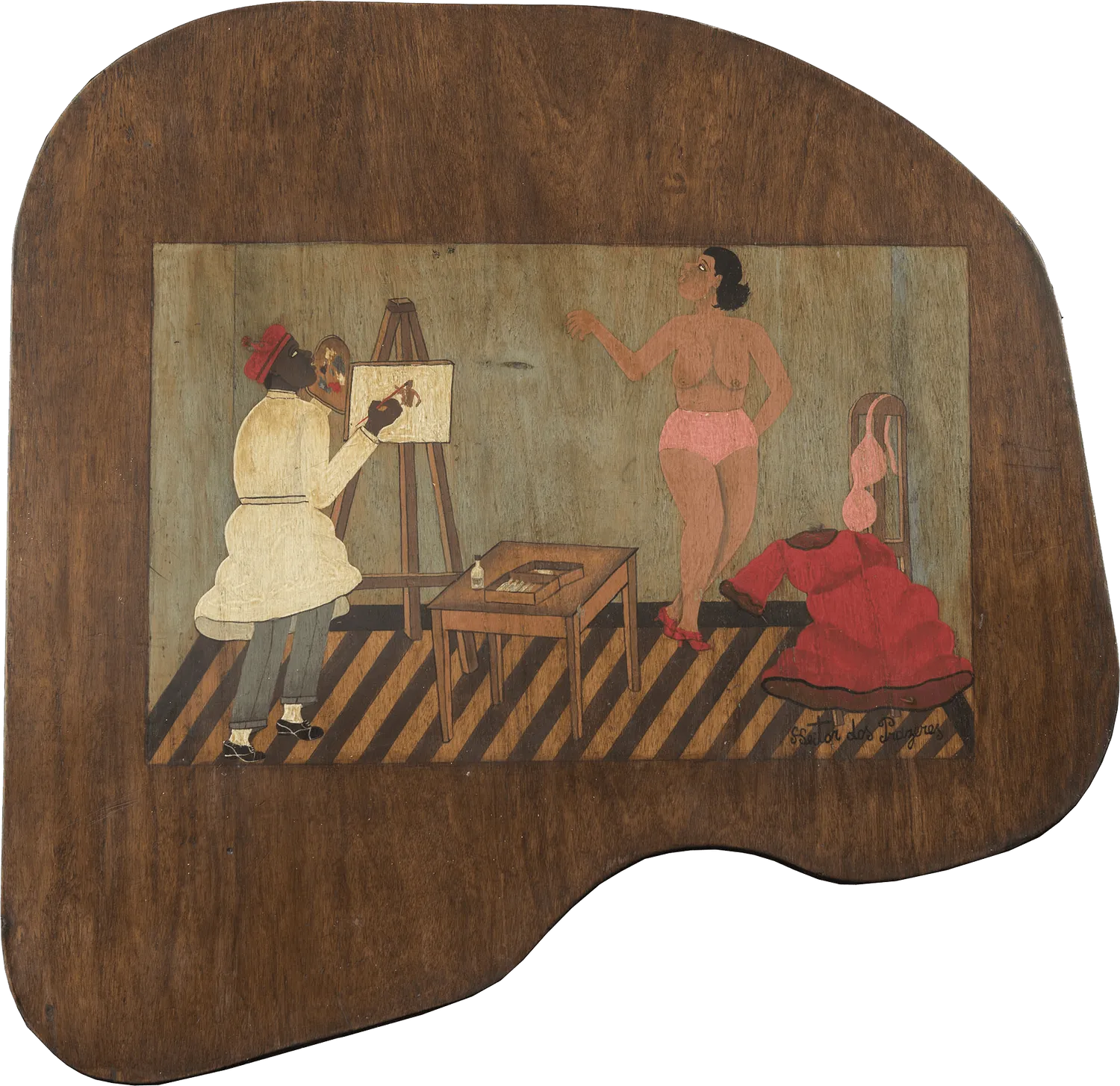

Heitor dos Prazeres
Untitled, 1960's
Oil on wood
47 x 66 x 62 cm
18 ½ x 26 x 24 ⅜ in
"As well as making the music, he uses his skills as a tailor to make the costumes that people wear to play Carnival. And it's an impressive wealth of detail. So, it's no wonder, when you look at his paintings, the attention he pays to people's clothes, accessories, shoes, hats, the rich detail, the detail – why so much detail? – it's because he's already mastered it, it's already part of him, of his expressiveness. And he transfers that to painting"
Glaucea Helena, MASP Pannels: Heitor dos Prazeres: protagonismo e arte, 2018

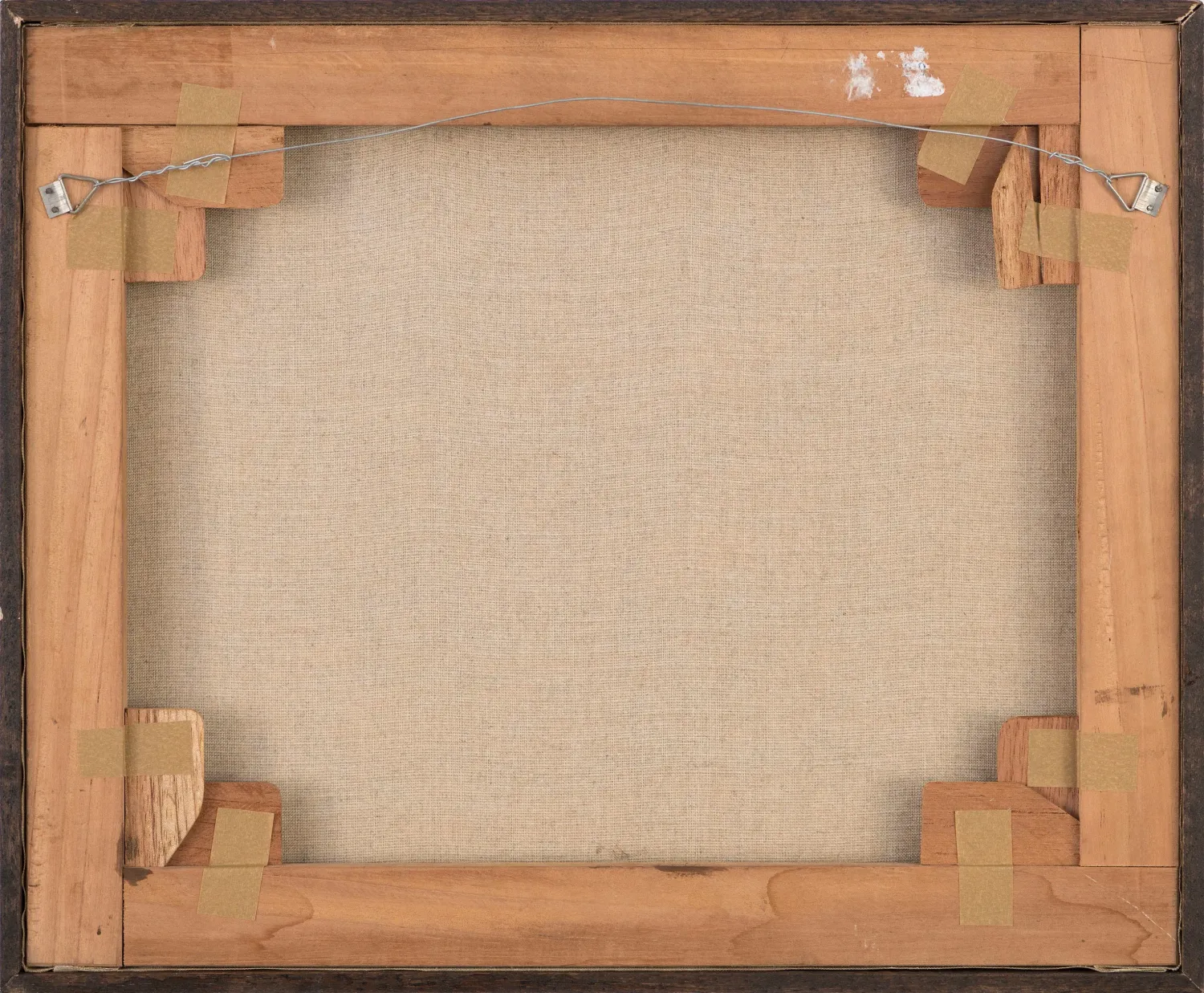
Heitor dos Prazeres
Ladrão de galinha, 1960's
Oil on canvas
37.5 x 46.0 cm
14 ¾ x 18 ⅛ in
In 1957, Heitor's works were part of the exhibition Arte Moderna no Brasil [Modern Art in Brazil], which traveled to various cities in Latin America (Buenos Aires and Rosario in Argentina, Lima in Peru and Santiago in Chile). The following year, he went to Salvador, Bahia, a trip arranged by the writer Jorge Amado, to exhibit his paintings at the Quirino Gallery. Although the São Paulo art circuit made the artist famous, it was in Rio de Janeiro that Heitor finally had a major solo exhibition, organized by Galeria Gea in 1959.

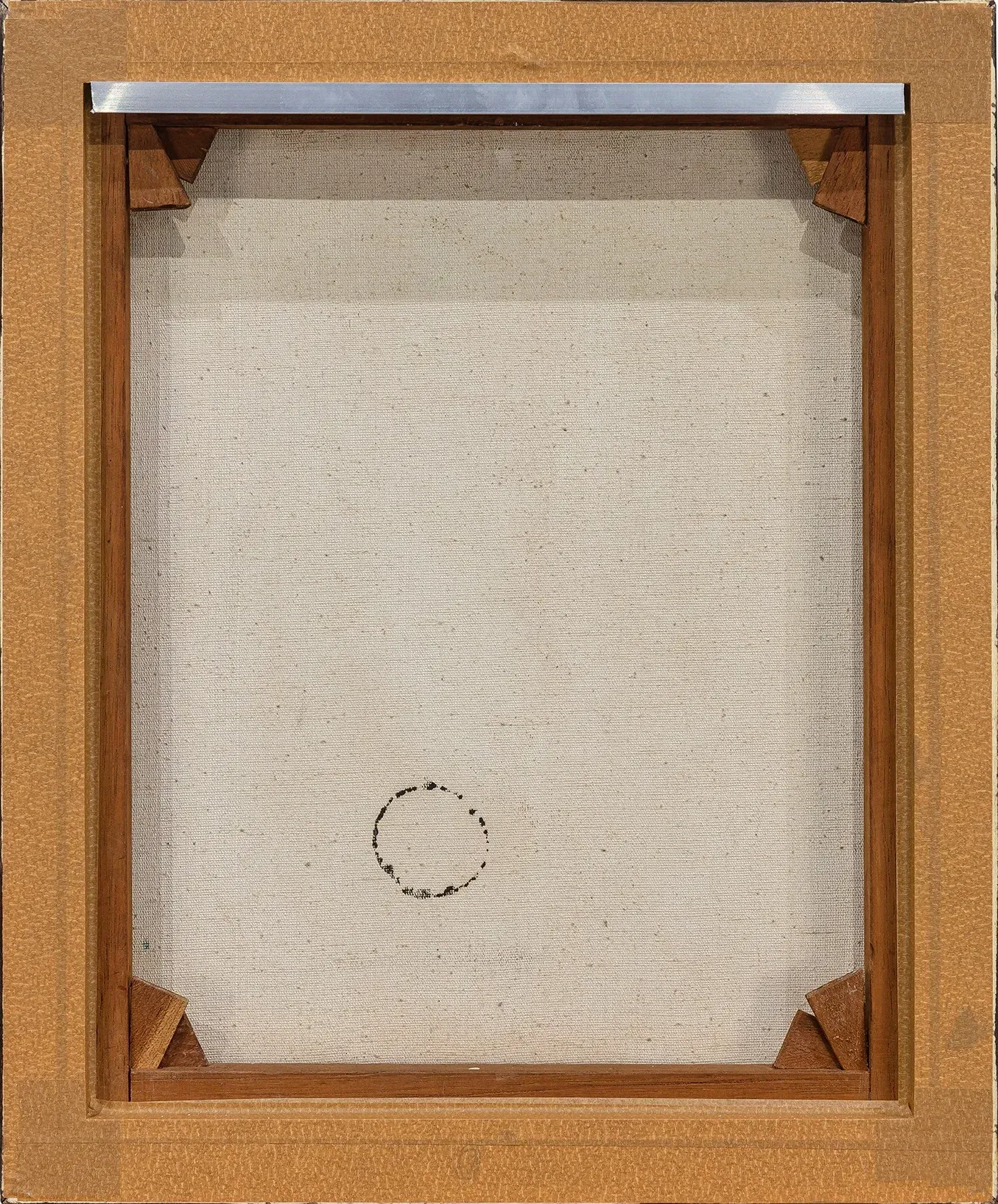
Heitor dos Prazeres
Untitled, 1960's
Oil on canvas
46 x 38 cm
18 ⅛ x 15 in
As the production of Heitor's paintings intensified at the same time as his recognition, the artist began to rely on assistants to meet the volume of orders. At his General Pedra studio, in the Little Africa region, he had up to thirty people – including friends and family – helping him finish paintings that were commissioned with similar motifs to previous works. Heitor therefore adopted a method of decals, which he positioned on the canvas and his helpers inserted, adopting a workshop system, as Alba Lirio defined it. He did the painting, the faces and the details of the clothing himself, giving each scene its own specificity.


Heitor dos Prazeres
Sem título, 1960's
Oil on canvas
38 x 46 cm
15 x 18 ⅛ in

Exhibition view Heitor dos Prazeres é meu nome, Centro Cultural Banco do Brasil – CCBB Rio de Janeiro (2023). Photo: Tânia Rego / Agência Brasil
Resistance and legacy
The 1960s, the last decade of Heitor dos Prazeres' life, was marked by political instability in Brazil. In 1964, with the military coup, after 22 years of service, the musician was sacked along with 36 other employees of Rádio Nacional, without employment rights, for being considered a communist threat within the station. The dismissals were commented on in the newspapers and Rubem Braga wrote in the Jornal do Brasil newpaper on July 30, 1964: “Heitor dos Prazeres, painter and sambista, is one of the most beloved figures in carioca life and instead of dismissing him after 22 years of service as a rhythm player at Nacional, the government, if it had any imagination and sense of justice, should inscribe his name on the National Order of Merit.”
“Despite all the repression, what history shows us is that, as much as the performance practices of indigenous peoples and Africans were banned, demonized, coerced and excluded, these same practices, through various processes of restoration and resistance, ensured the survival of a body of knowledge that resisted attempts to erase it completely”
Leda Maria Martins, in Performances do tempo espiralar, 2021

Haroldo Costa visiting the exhibit Heitor dos Prazeres é meu nome at Centro Cultural Banco do Brasil – CCBB, Rio de Janeiro, 2023, which he curated with Raquel Barreto and Pablo León de la Barra
One of his great friends was the poet Carlos Drummond de Andrade, who often visited Heitor in his studio. To Heitor he dedicated the poem Um homem e seu carnaval [A Man and His Carnival]. Drummond, who also helped him get hired by the Ministry of Education and Culture as a restoration assistant in 1930, commented on the artist:
“I don't know how the wise explain the Heitor 'case'; to me, a layman, it seems like the happy result of acculturation: all the liveliness and delicacy of the original elements of the Black man were preserved in him, in contact with different cultural forms; and without shock, but without renouncing the best of his ancestry. Heitor integrated himself into Rio's urban and cosmopolitan culture, giving us an example of purity and authenticity at the same time.”
Carlos Drummond de Andrade, in Heitor dos Prazeres: sua arte e seu tempo, 2003
In the year of his death, 1966, Heitor took part in two exhibitions abroad: Oito pintores ingênuos brasileiros [Eight Brazilian Naïf Painters], in Paris, and Pintores primitivos brasileiros [Brazilian Primitive Painters], in Moscow, which traveled to other European cities. However, one of the most important moments in the artist's career was his participation in the Premier Festival Mondial des Arts Nègres [1st World Festival of Black Arts] in Dakar, Senegal, where he represented Brazil along with painter Rubem Valentim, journalist Clarival do Prado Valadares, singer Clementina de Jesus, composer Silvinho da Portela and capoeira dancer/fighter Mestre Pastinha.
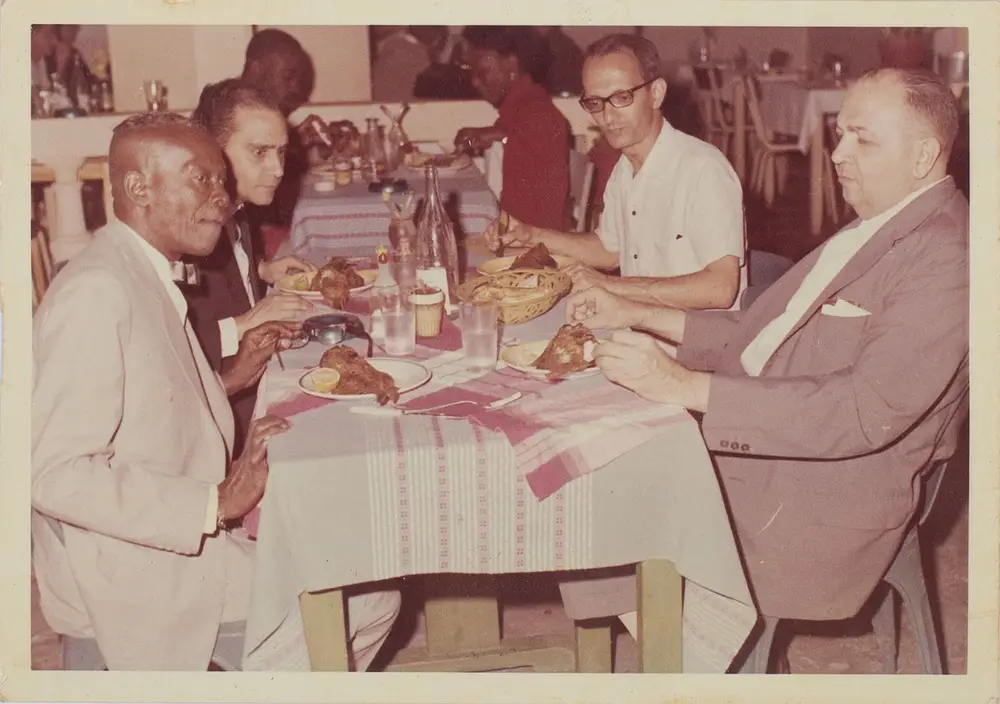
Heitor dos Prazeres, Rubem Valentim, Pedro Moacir Maia and Clarival do Prado Valladares (right to left), no Premier Festival Mondial Des Arts Nègres, em Dakar, Senegal (1966) (Fundo Rubem Valentim) - Collection Centro de Pesquisa do Museu de Arte de São Paulo Assis Chateaubriand
The historic event, which brought together personalities from various African and Afro-diasporic countries, was promoted by the president of Senegal, Léopold Sédar Senghor, the country's first elected president after it became independent, and a key figure in the Négritude movement, along with Aimé Césaire, among others.
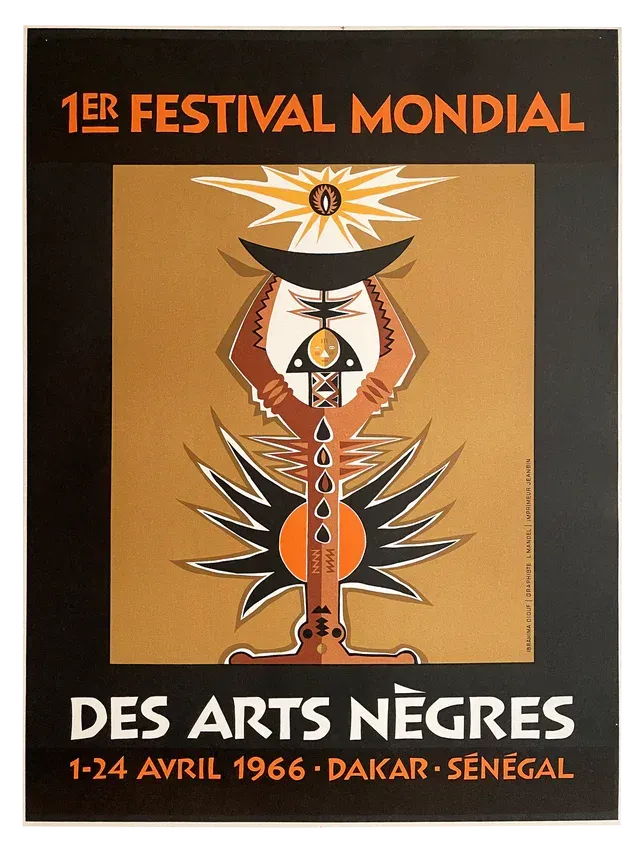
Poster for the 1er Festival Mondial des Arts Nègres (1966), Dakar, Senegal
"We need to revisit our history of art, our productions, thinking about our experience as Brazilians, how we are shaped, what this place is, how this encounter took place, how these relations are today – which are racialized, hierarchical relations. They are unequal relations. It's like that in life and it's like that in art. And we must look at this, we must recognize this and be able to create other narratives, other perspectives.”
Glaucea Helena, MASP Pannels: Heitor dos Prazeres: protagonismo e arte, 2018
The absence of more extensive records on the life and work of Heitor dos Prazeres is testimony to a major flaw in the history of Brazilian art, which has only been revised in recent years.


Heitor dos Prazeres
Untitled, 1961
Oil on canvas
46 x 38 cm
18 ⅛ x 15 in
In 2023, Heitor dos Prazeres' body of work was finally presented to the contemporary public in a major retrospective at the Centro Cultural Banco do Brasil – CCBB, in Rio de Janeiro. Supported by Almeida & Dale and accompanied by Heitor dos Prazeres Filho and people close to the artist, the show was curated by Raquel Barreto, Haroldo Costa and Pablo León de la Barra.

Exhibition view Heitor dos Prazeres é meu nome, Centro Cultural Banco do Brasil – CCBB Rio de Janeiro (2023). Photo: Tânia Rego / Agência Brasil
“What he does in his paintings is to give a sense of humanity, which was denied to the Black population by the enslavement process that took place. This is the great work of Heitor dos Prazeres.”
Glaucea Helena, MASP Pannels: Heitor dos Prazeres: protagonismo e arte, 2018

CEP 01425-010
Saturday 11am to 4pm
Closed on holidays
Phone/WhatsApp:
+55 11 3882 7120
press@almeidaedale.com.br

